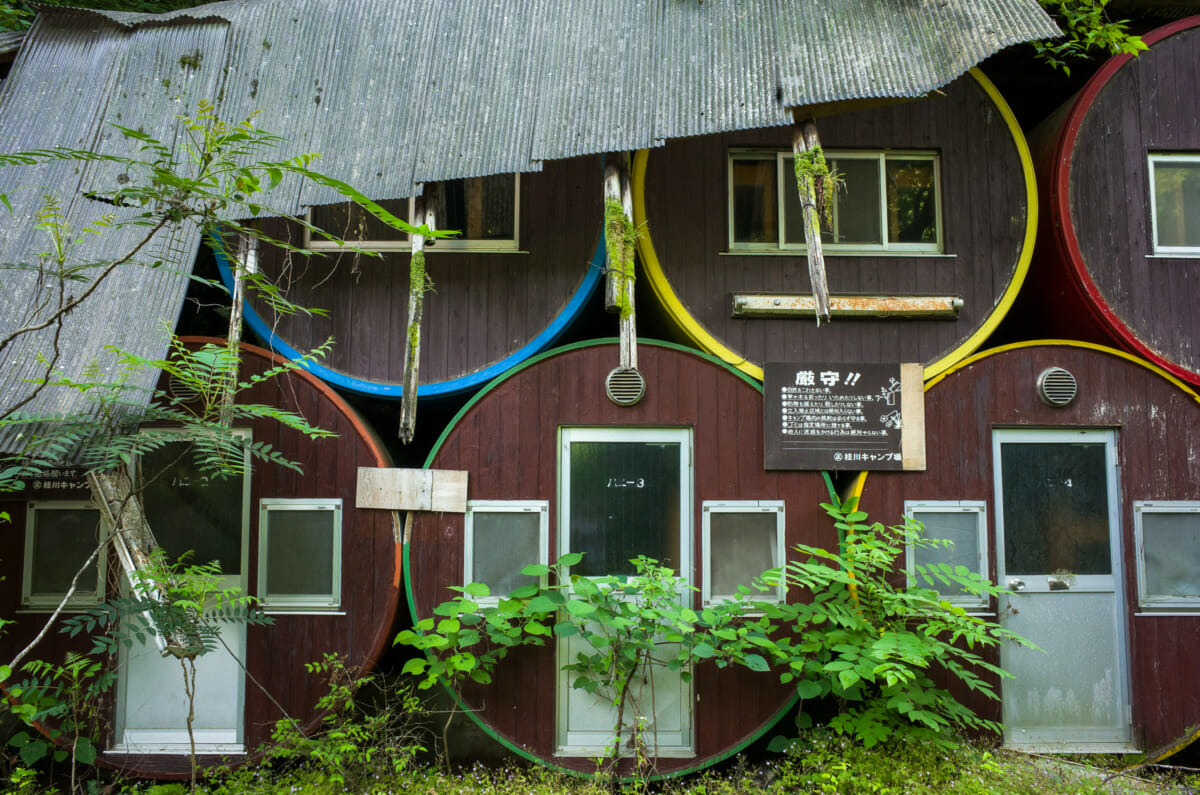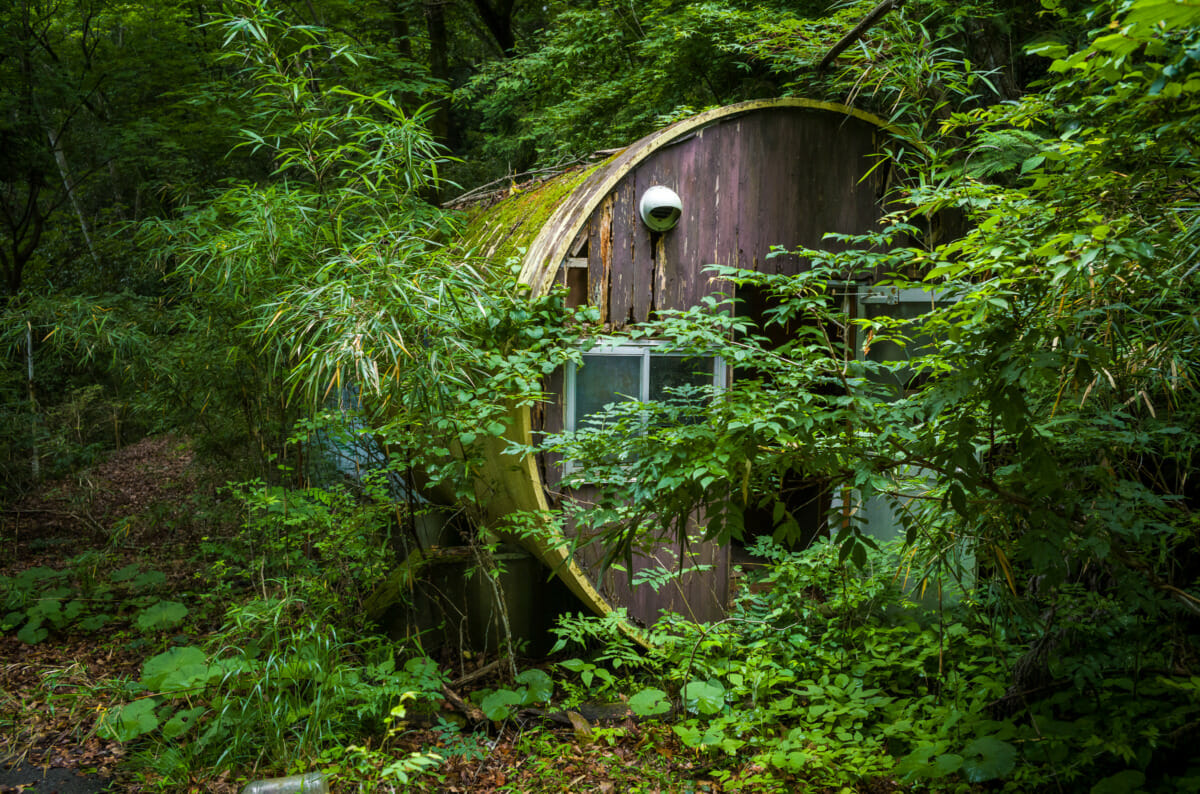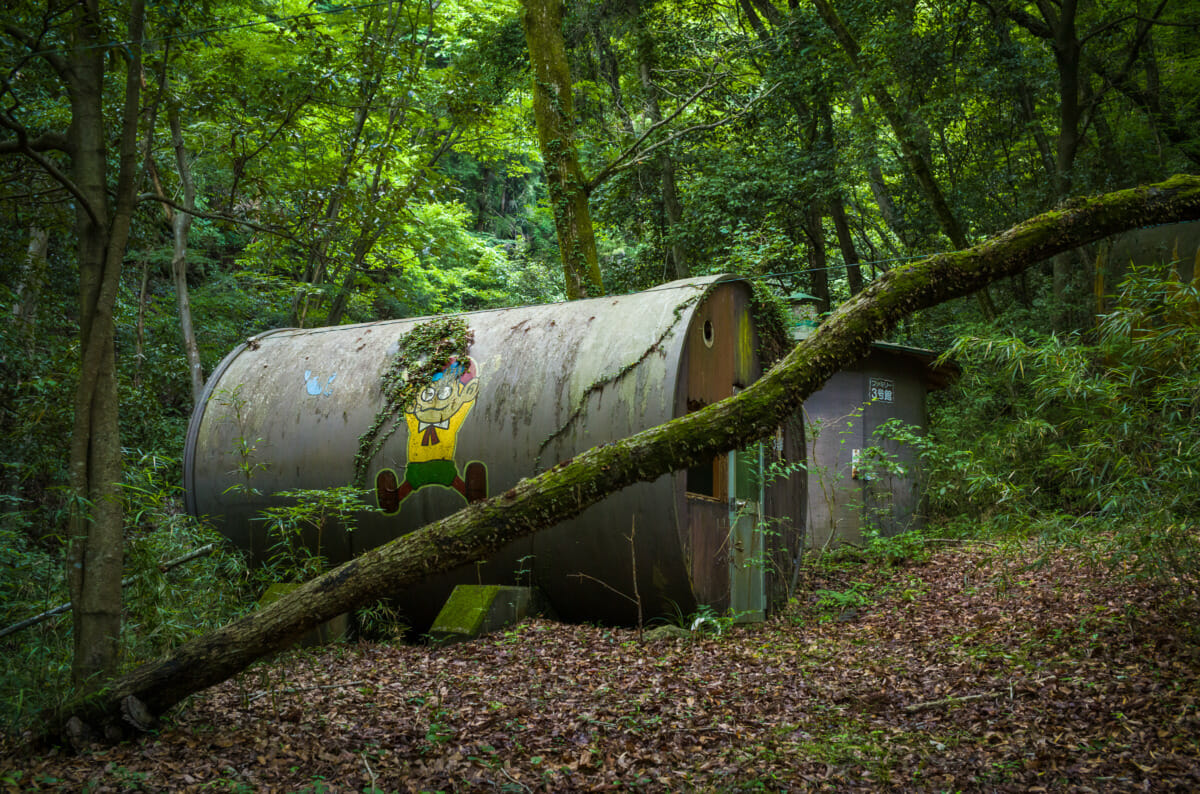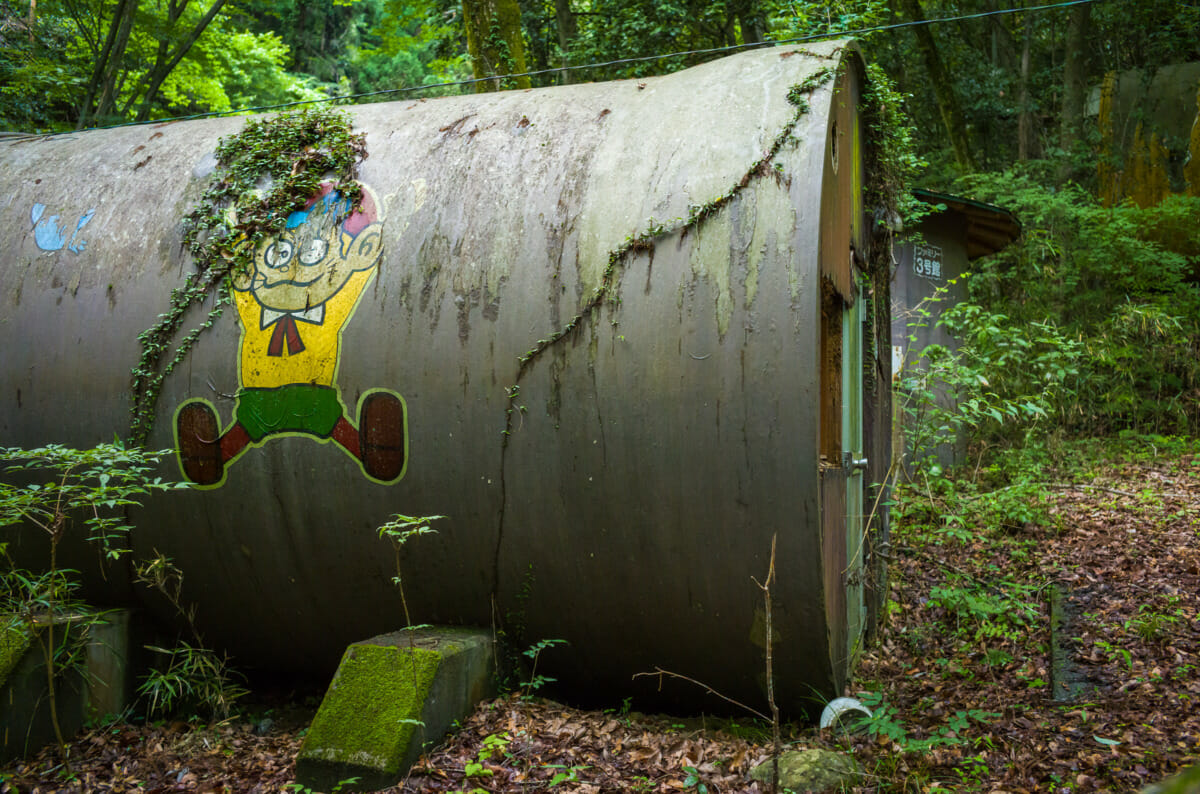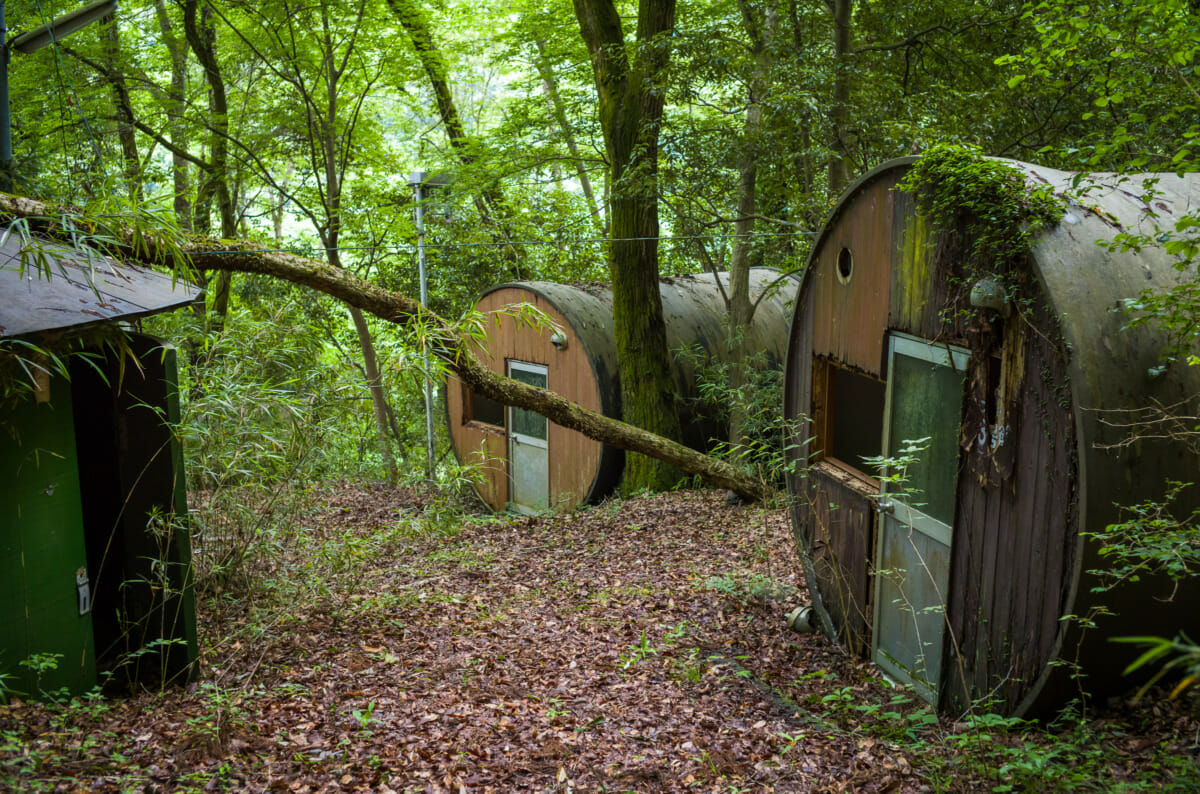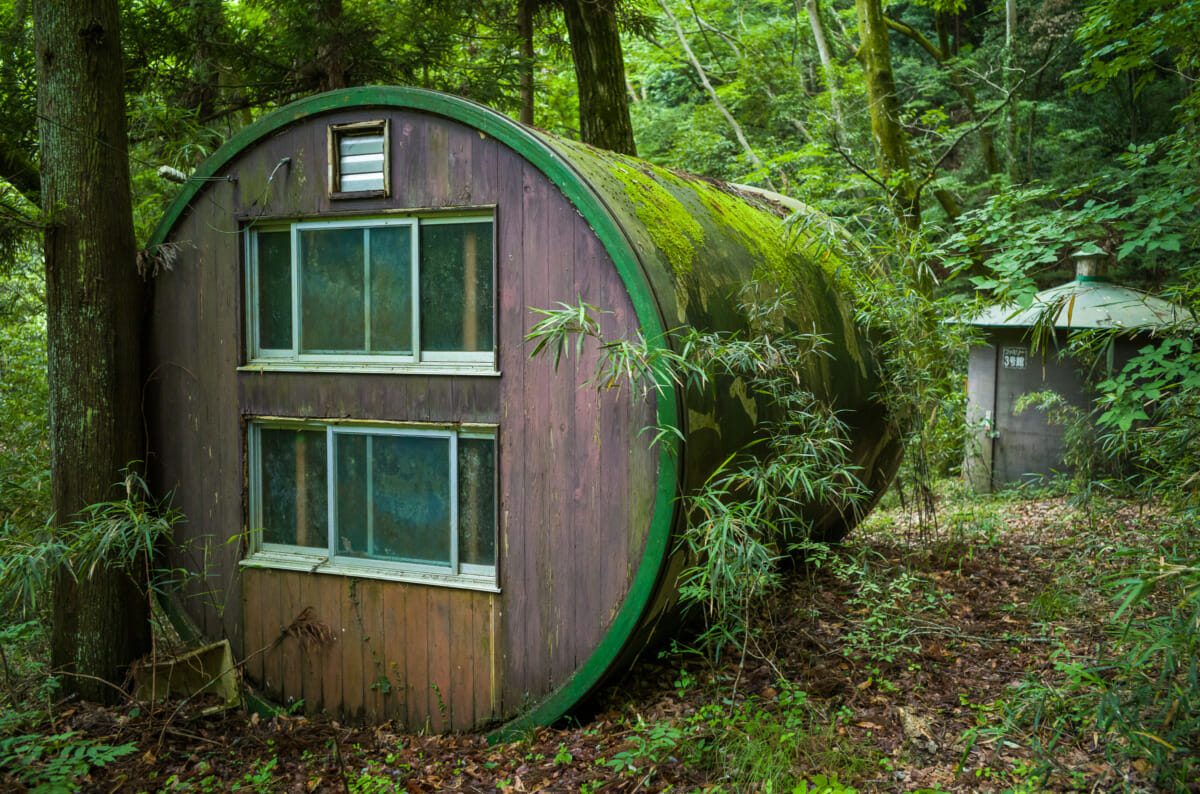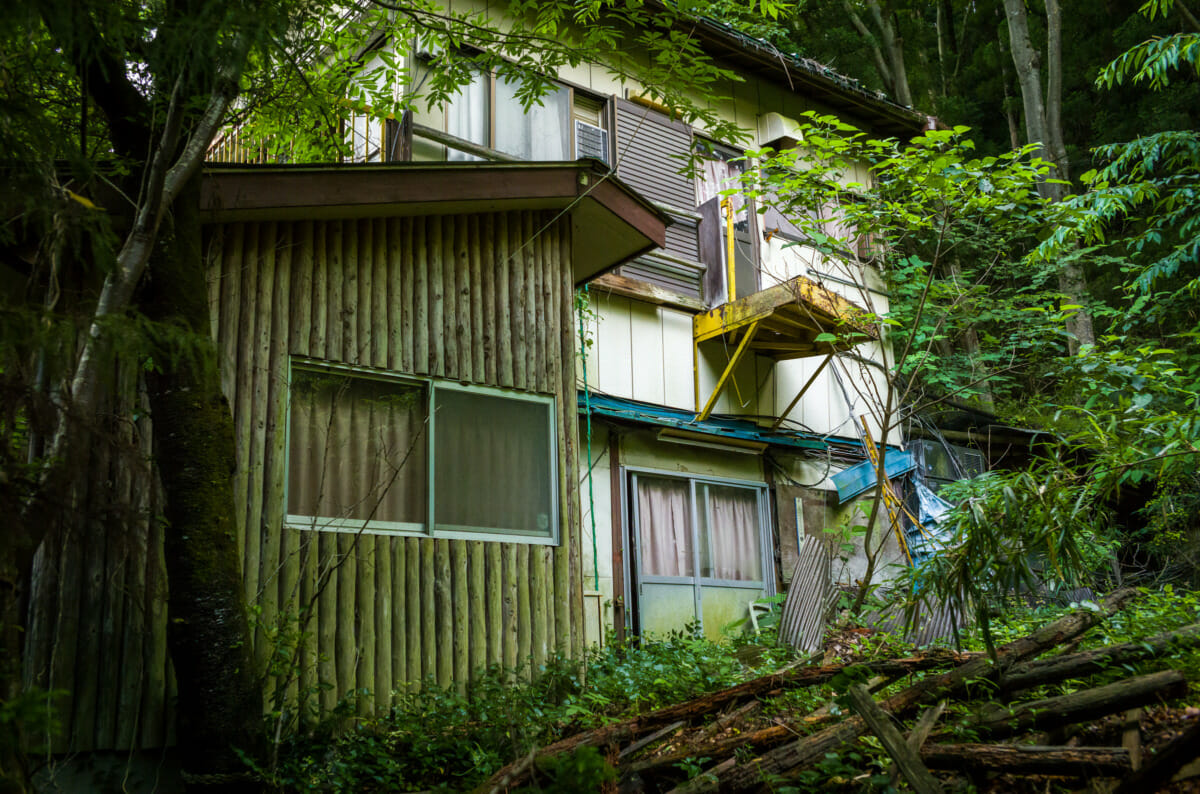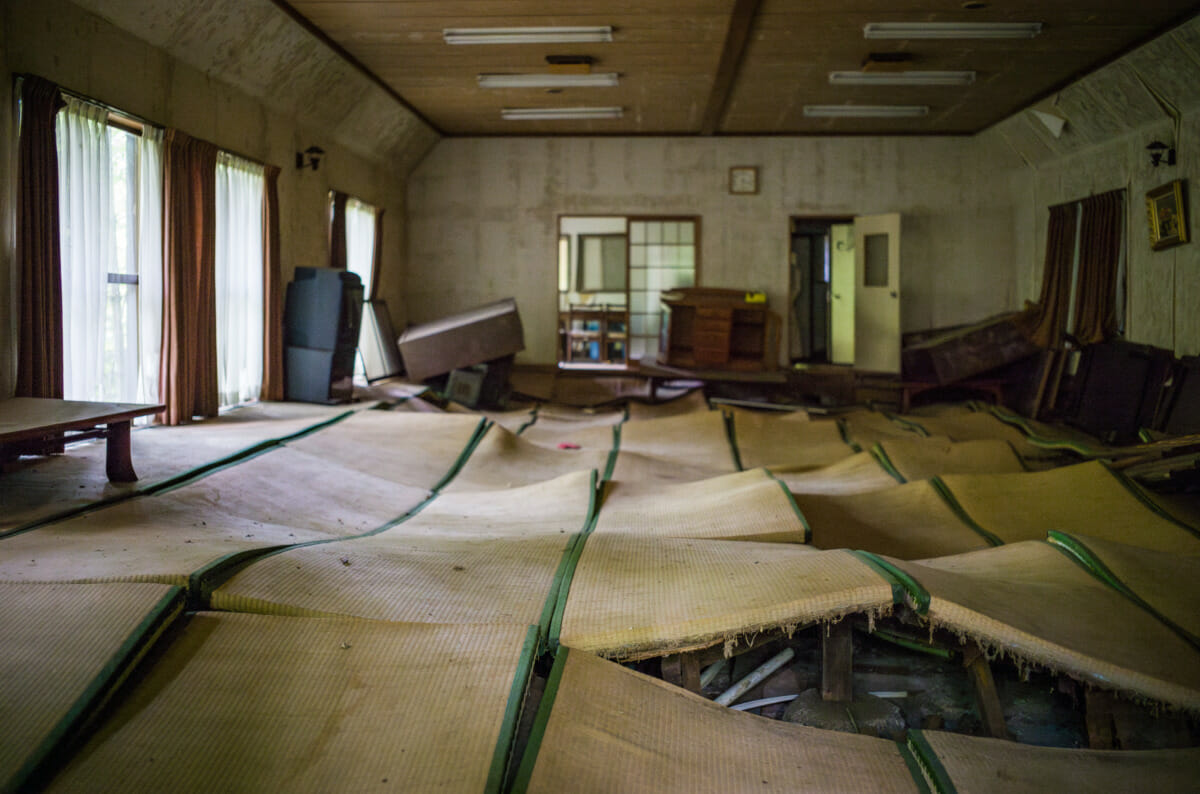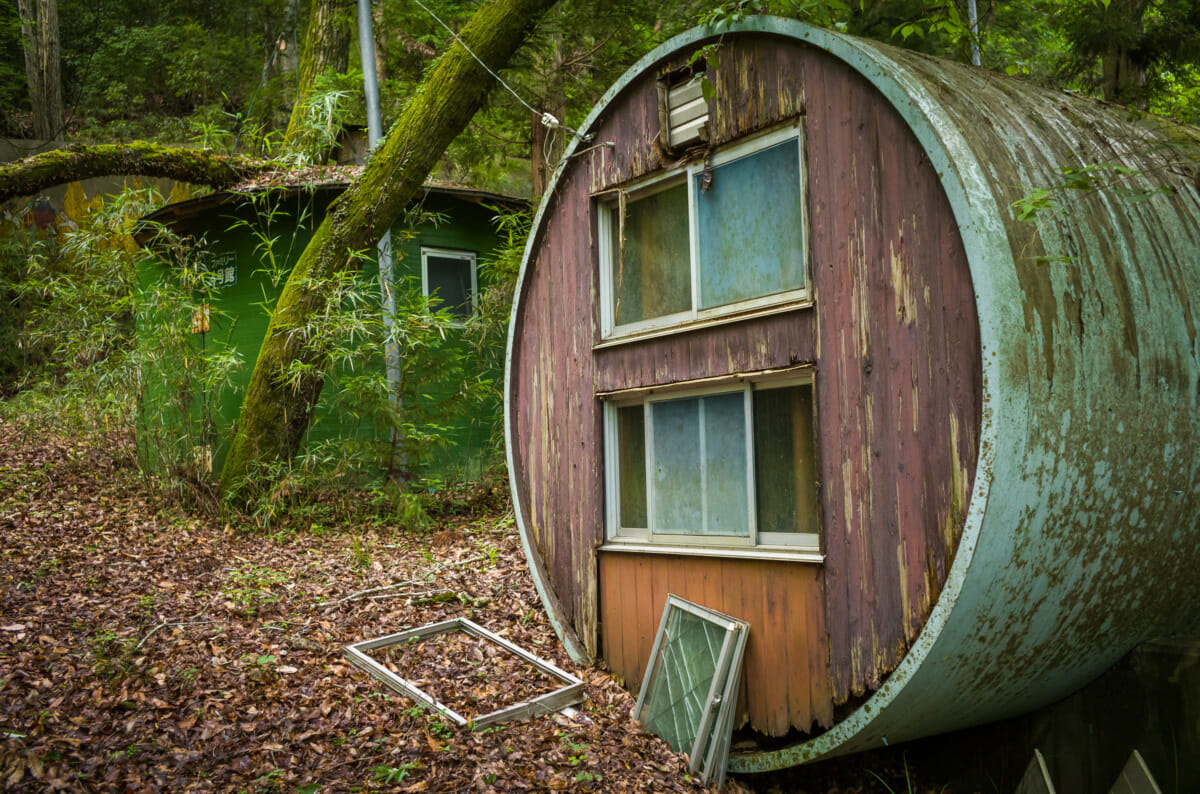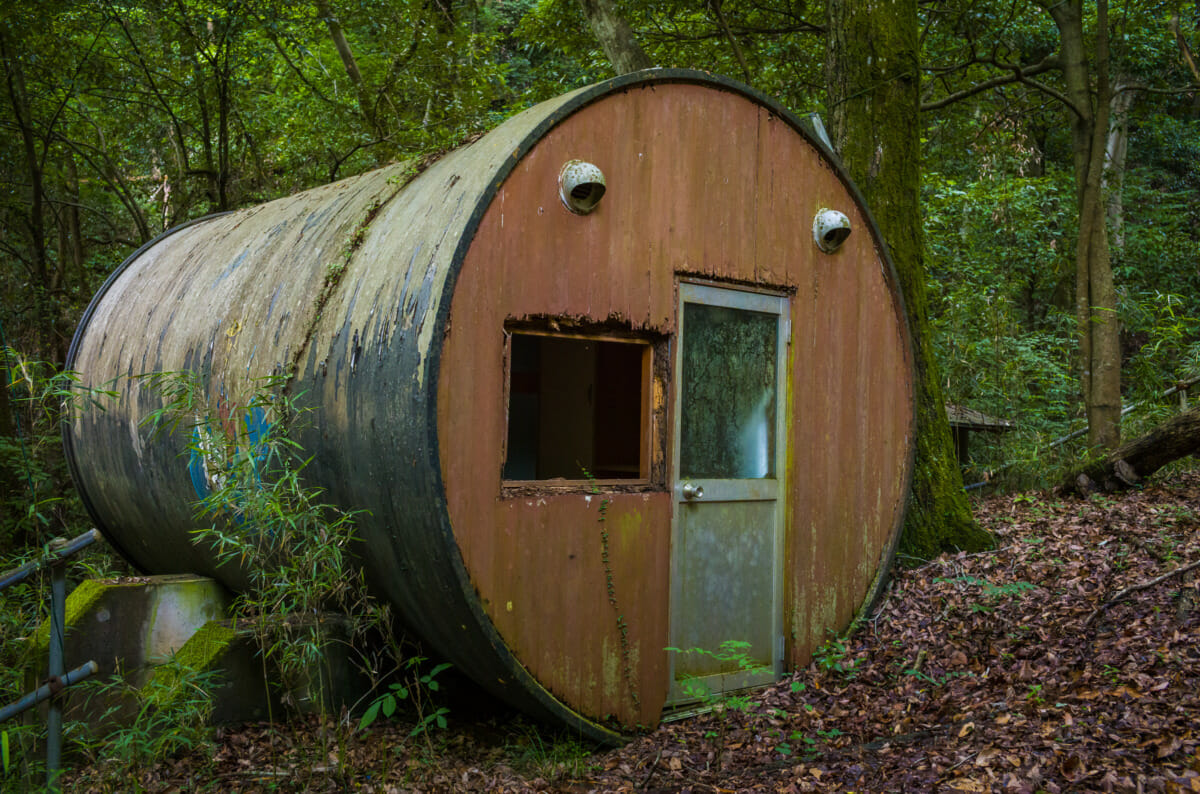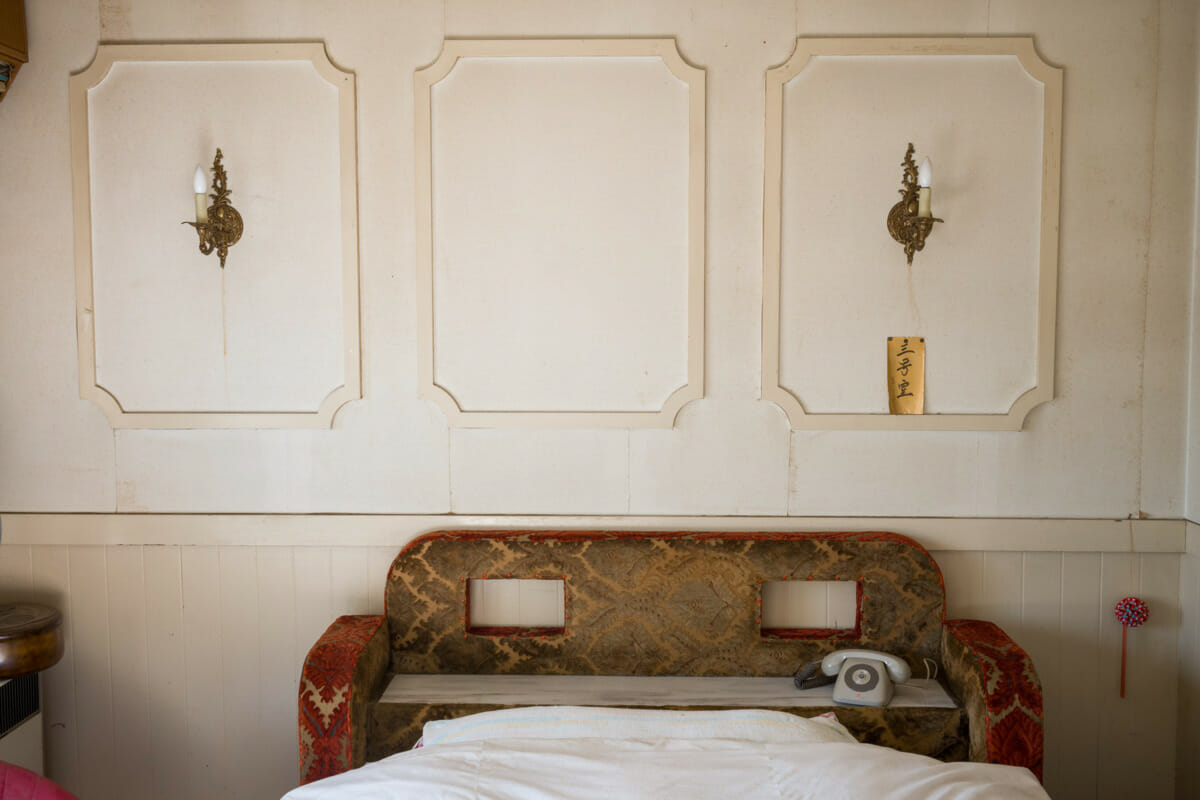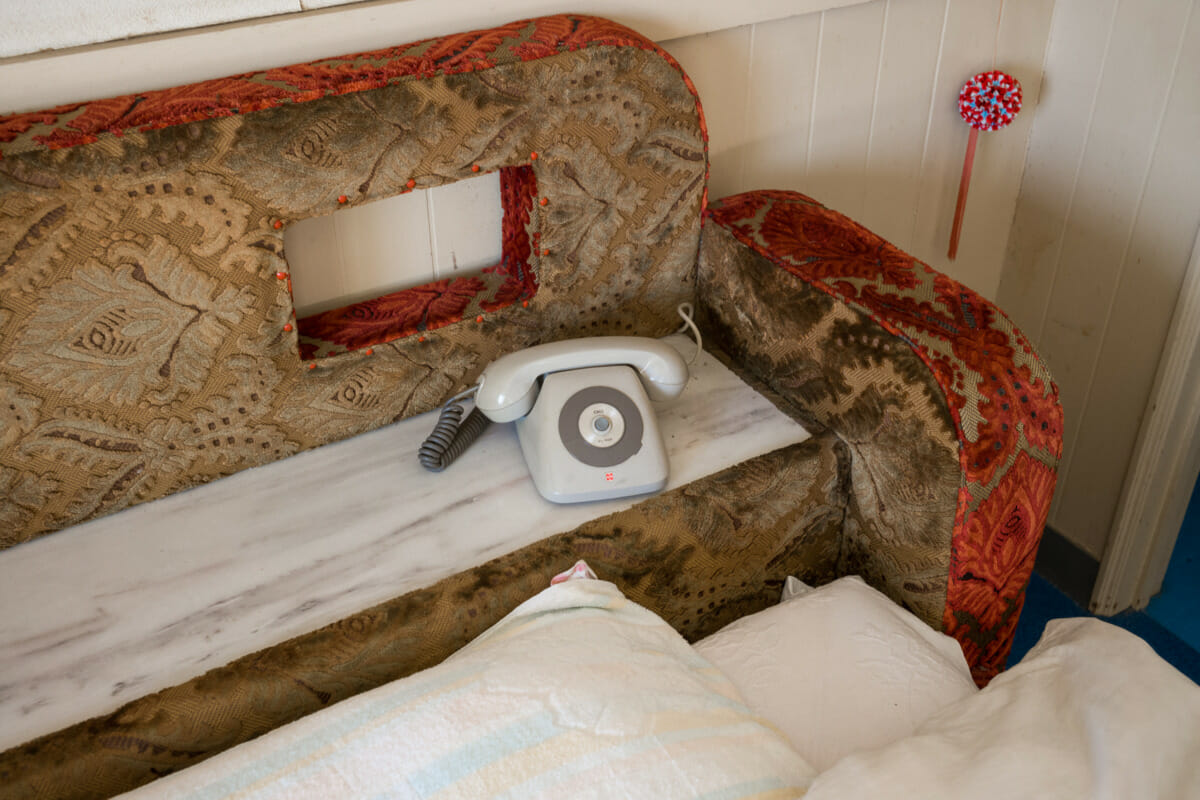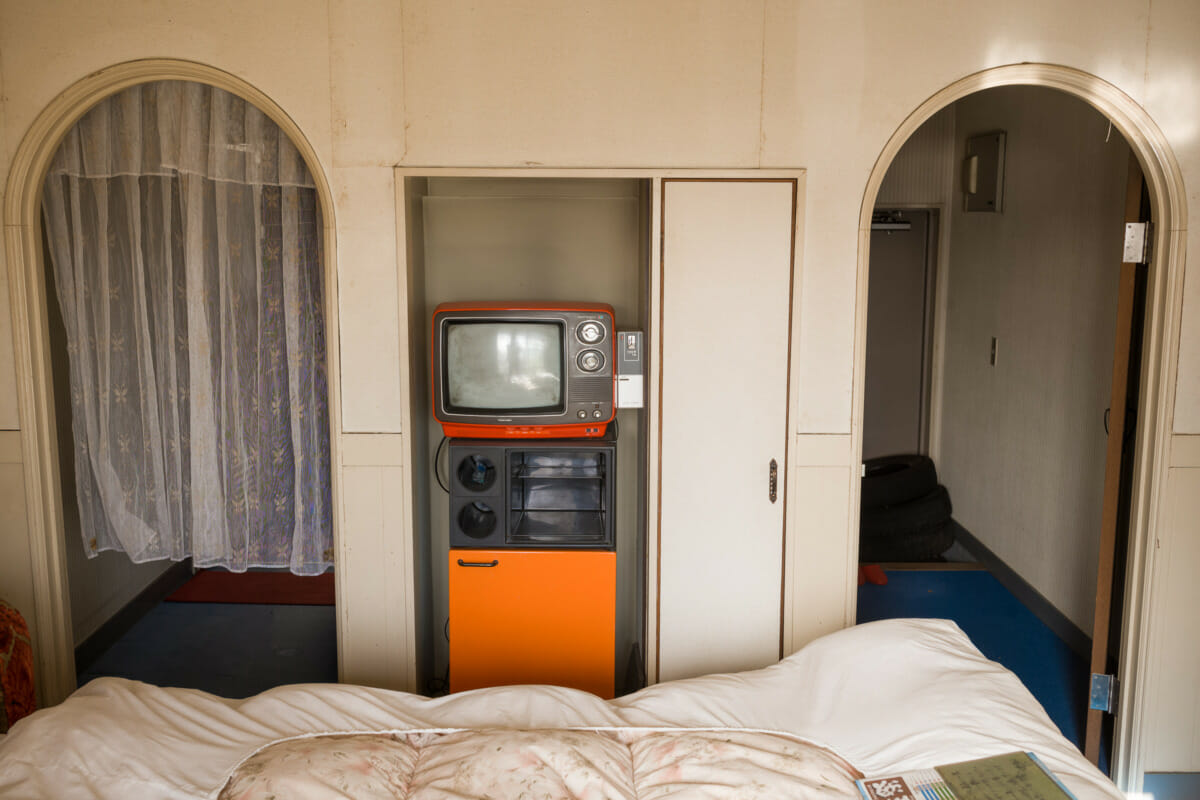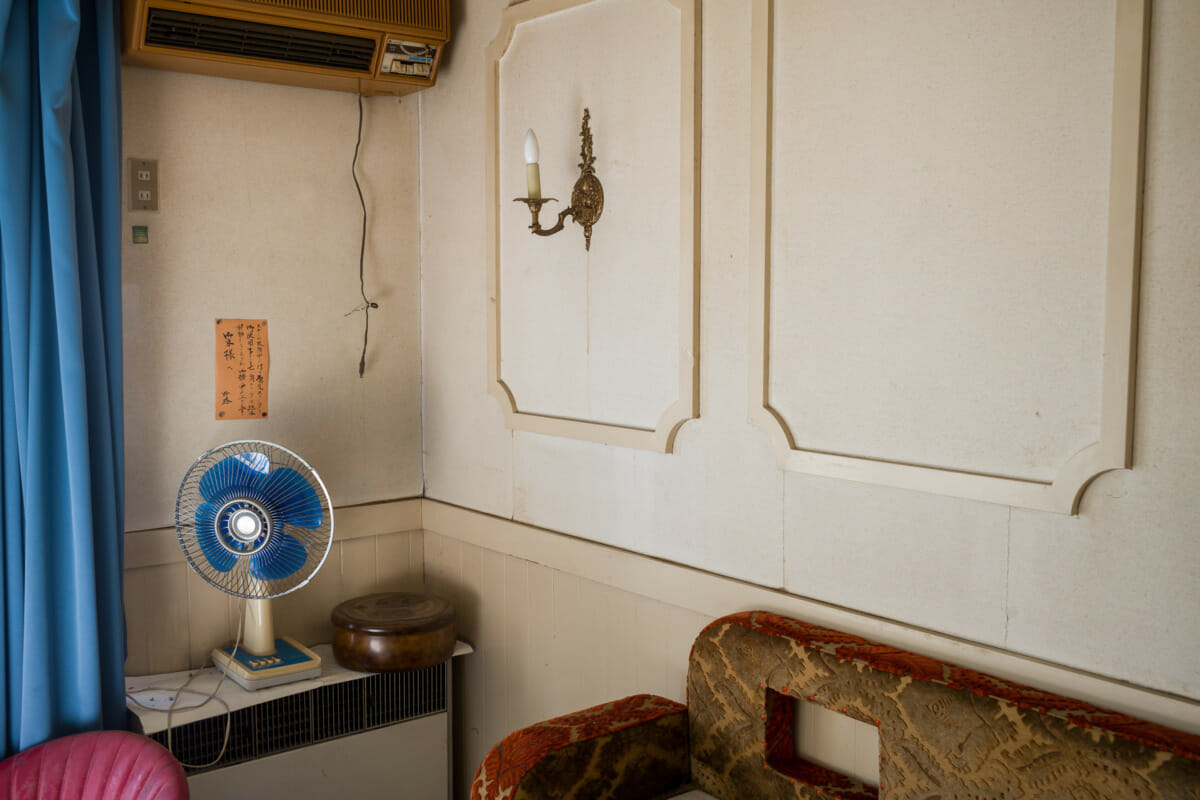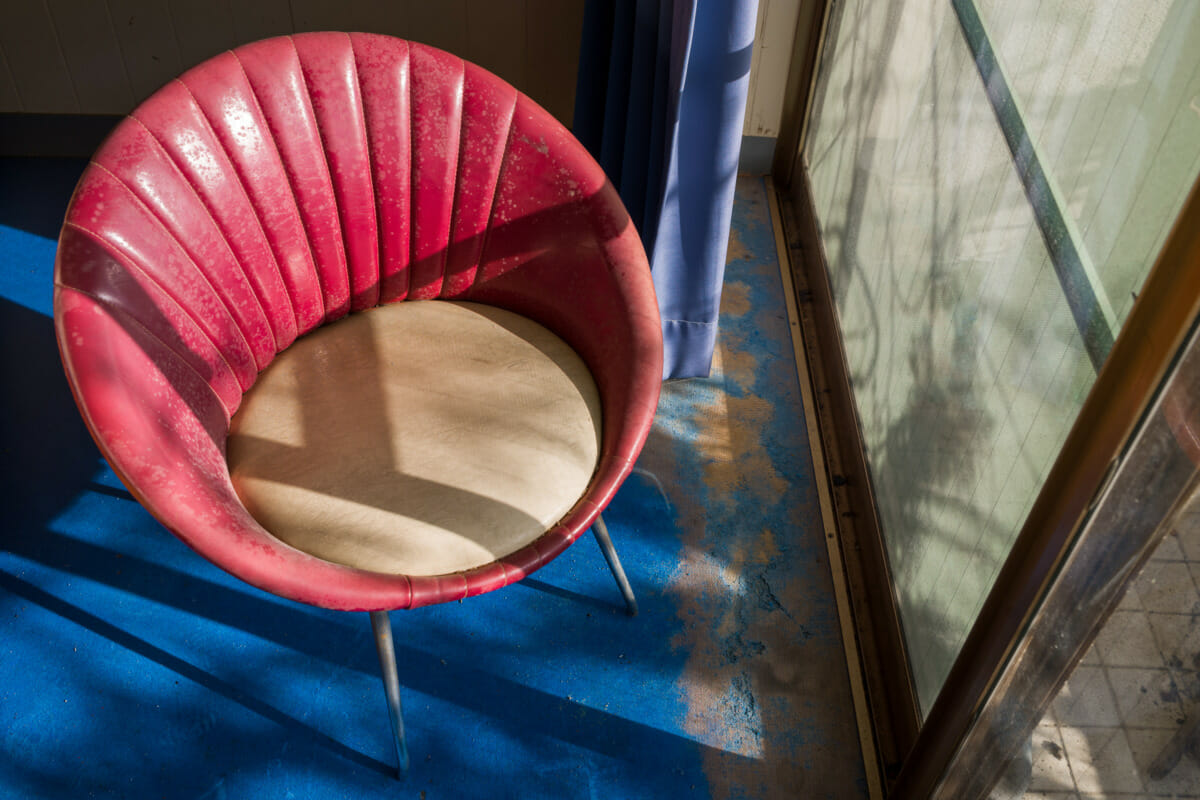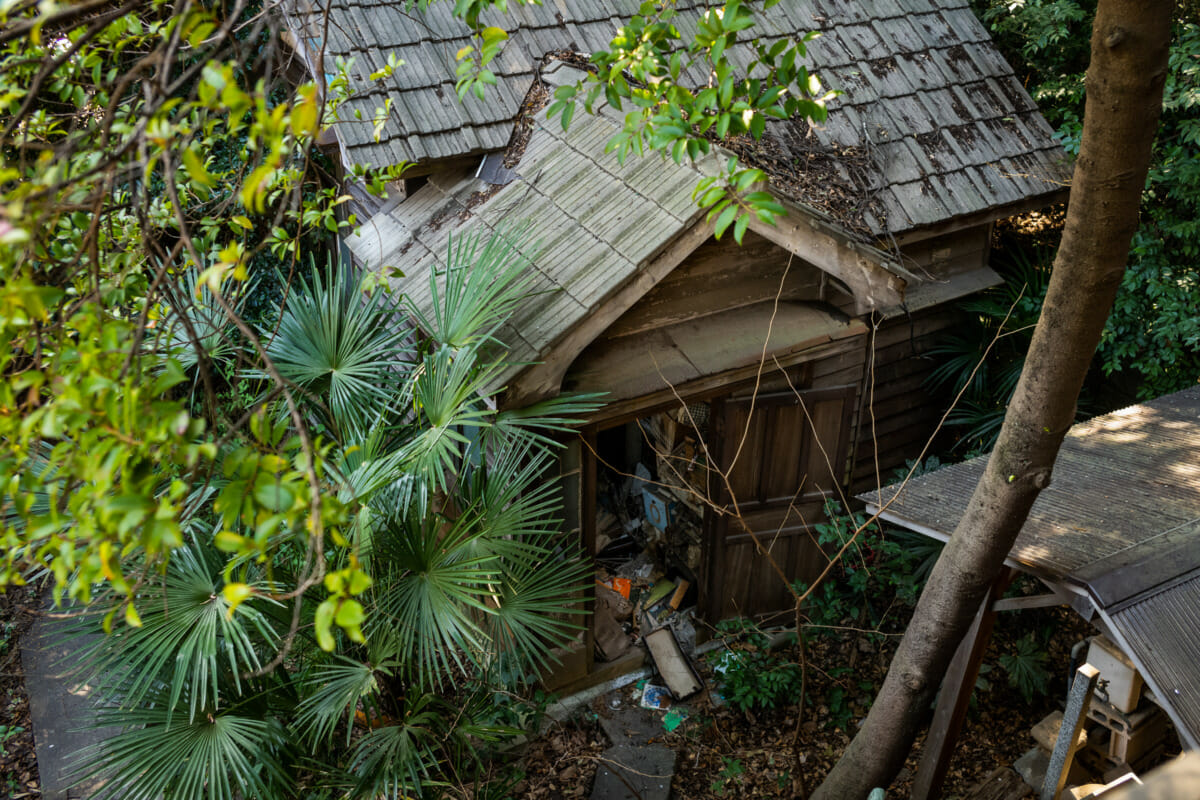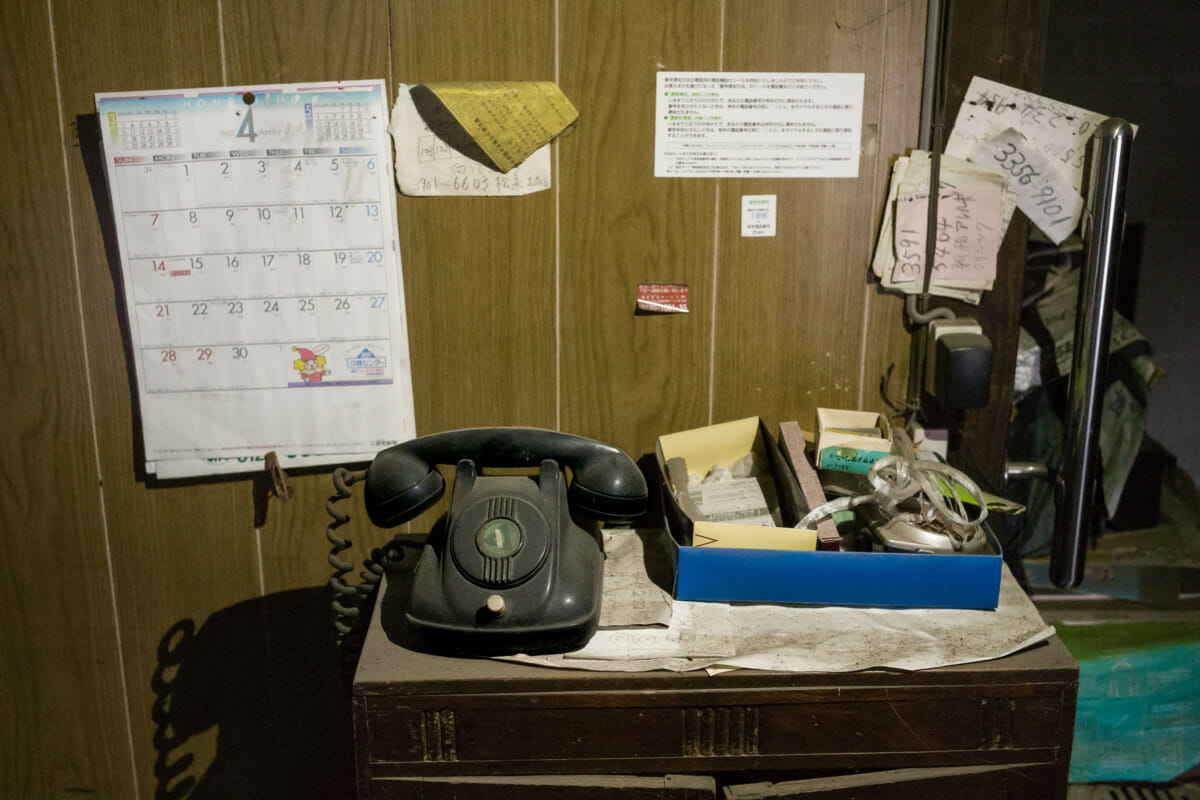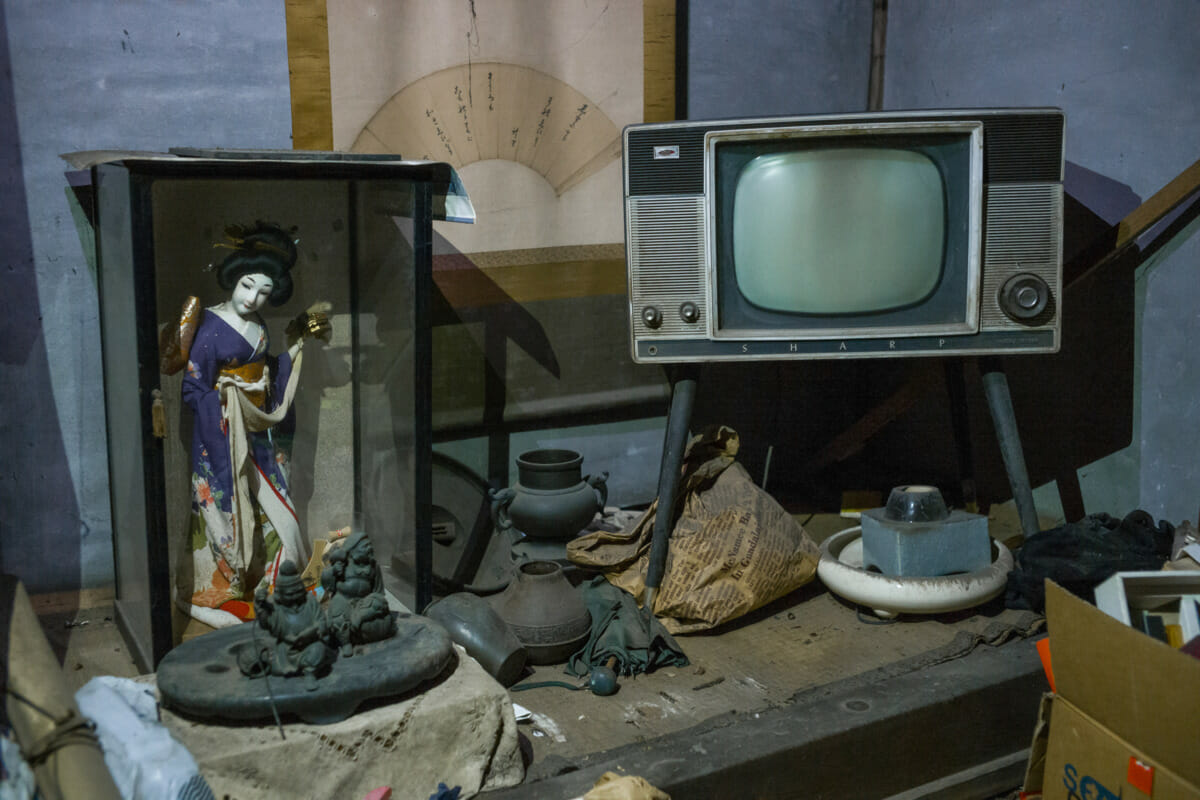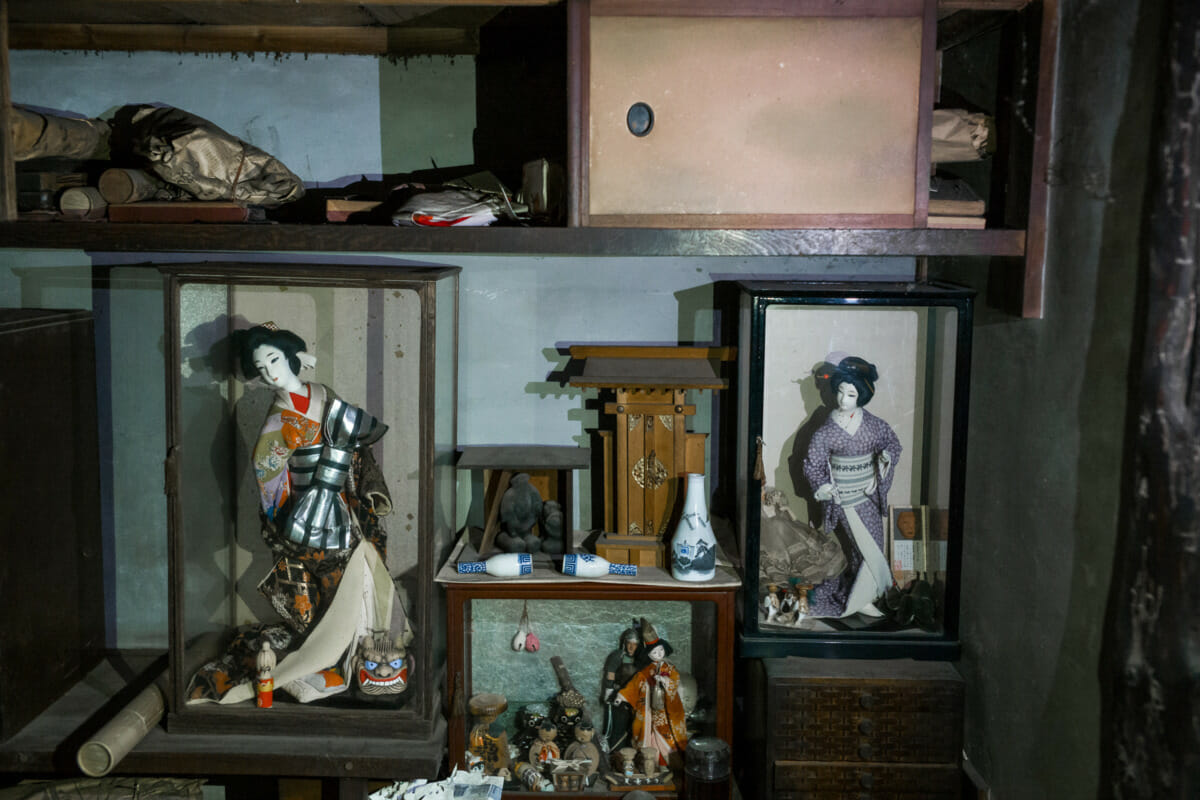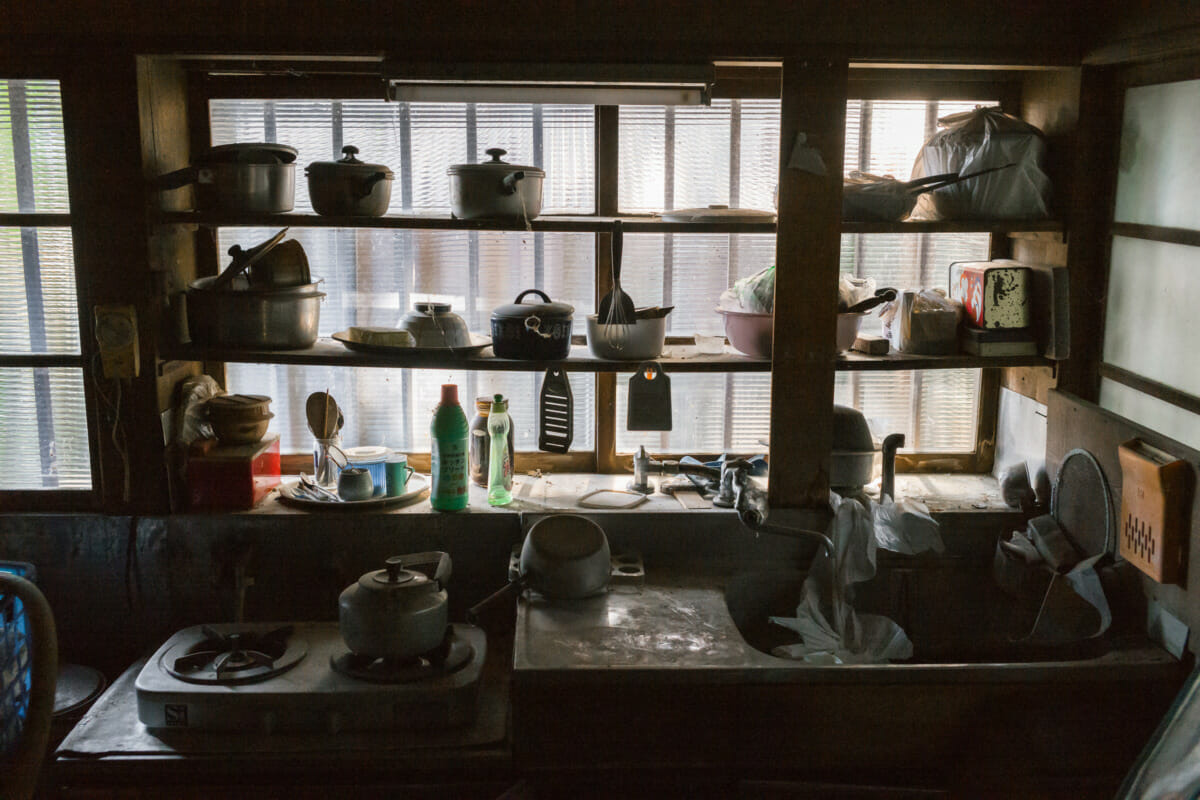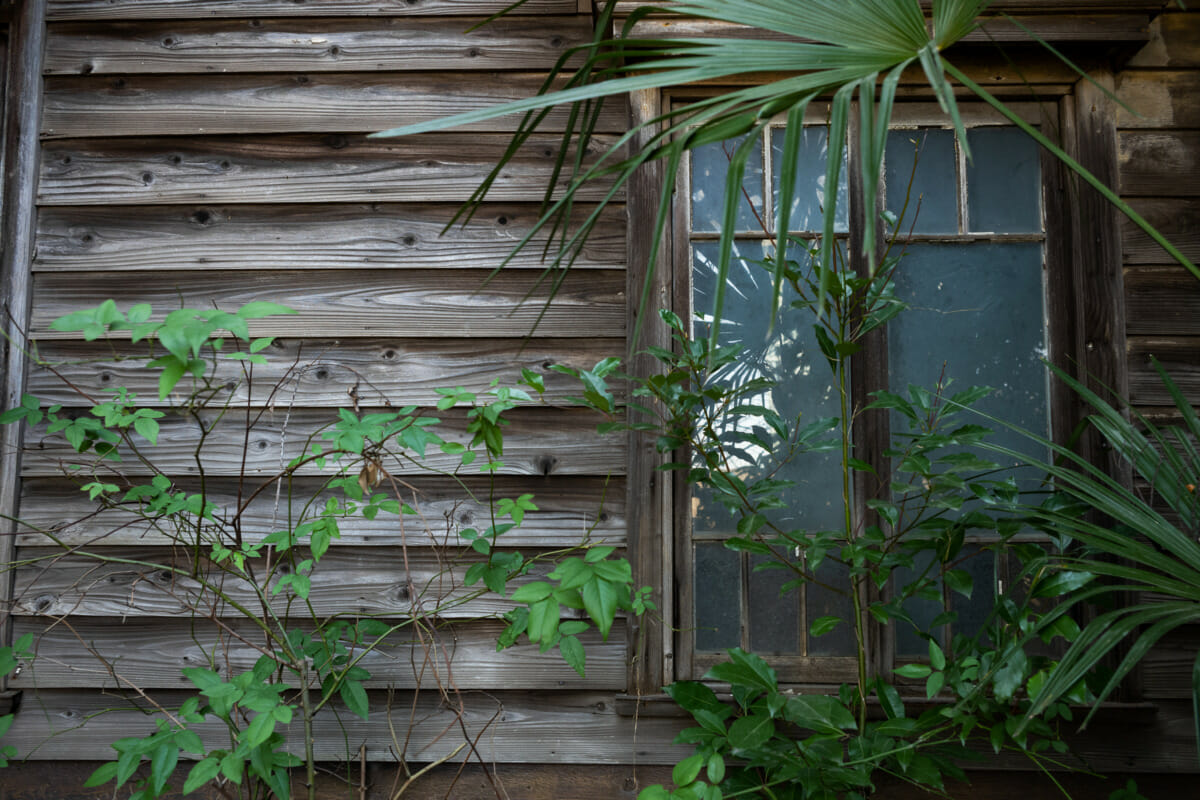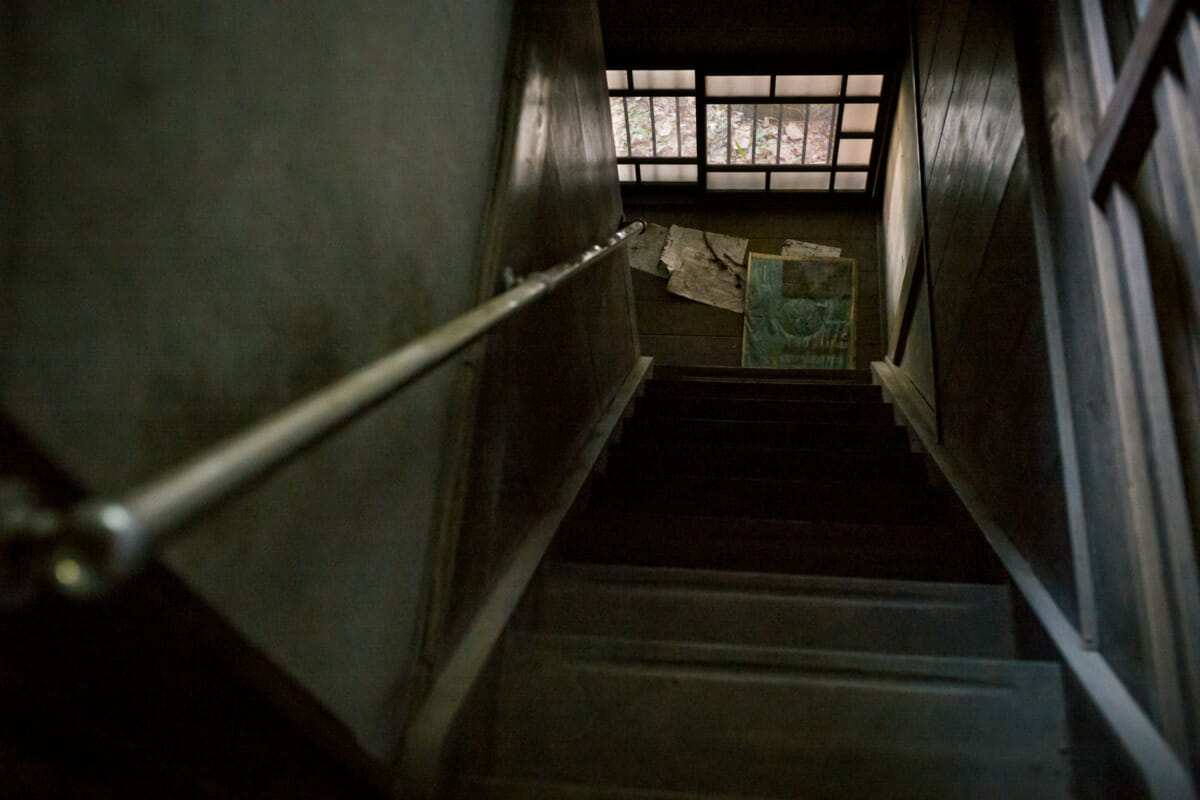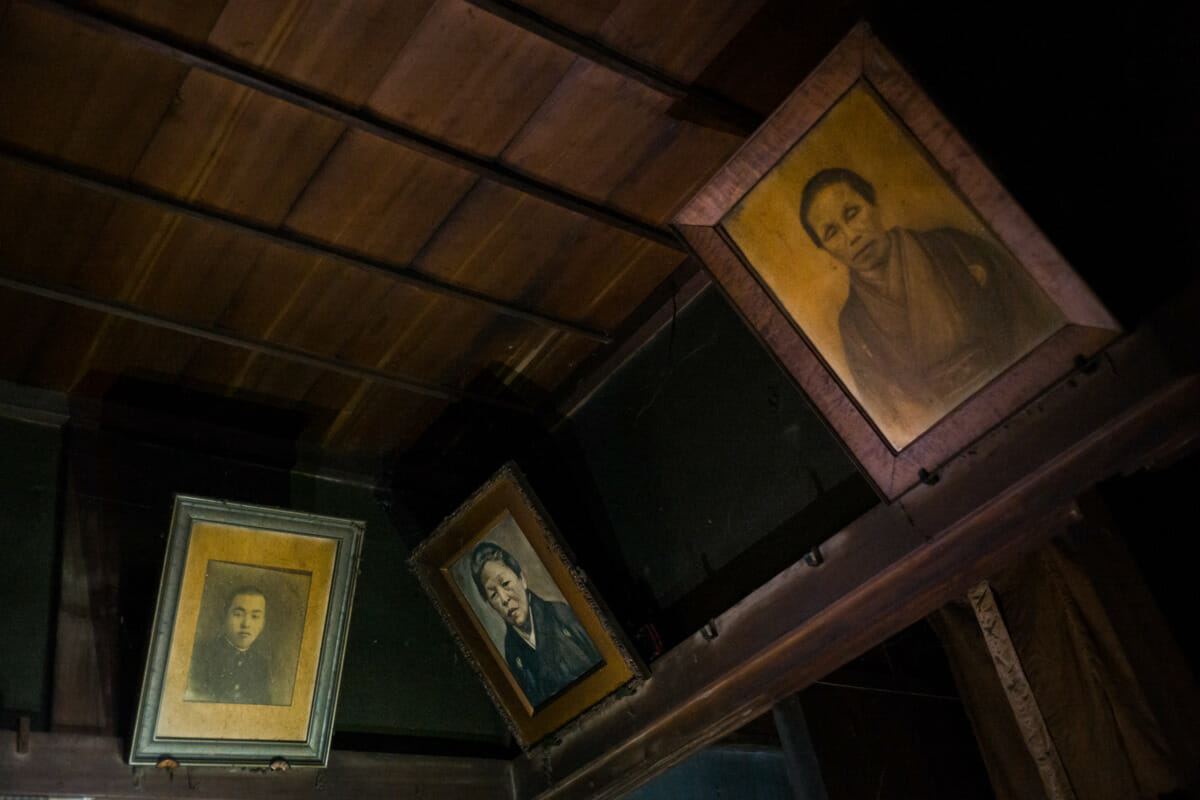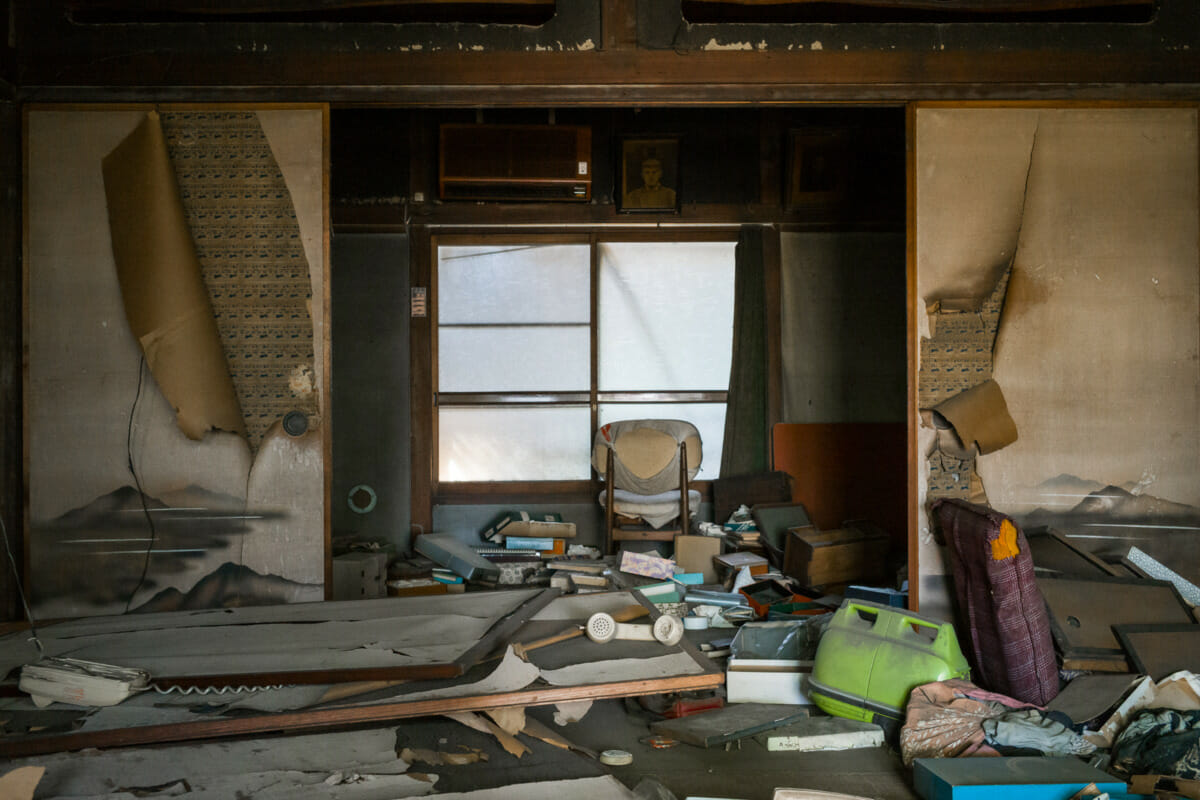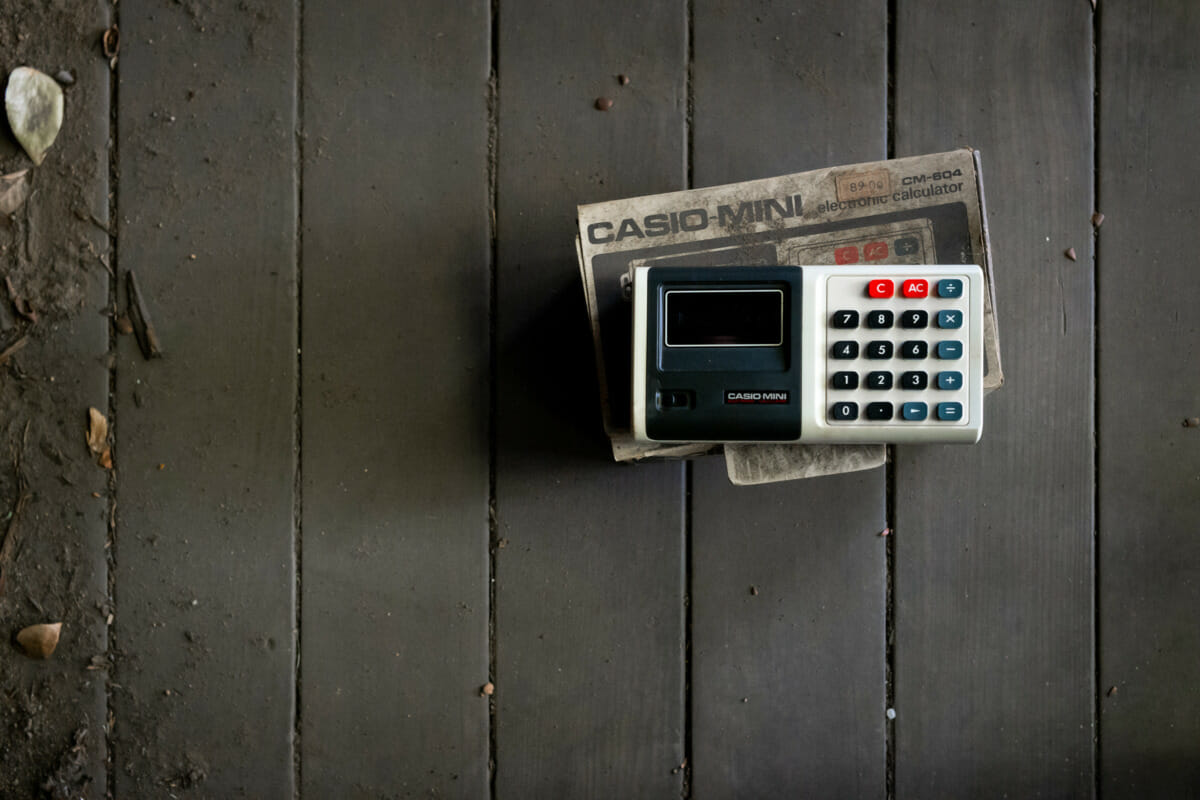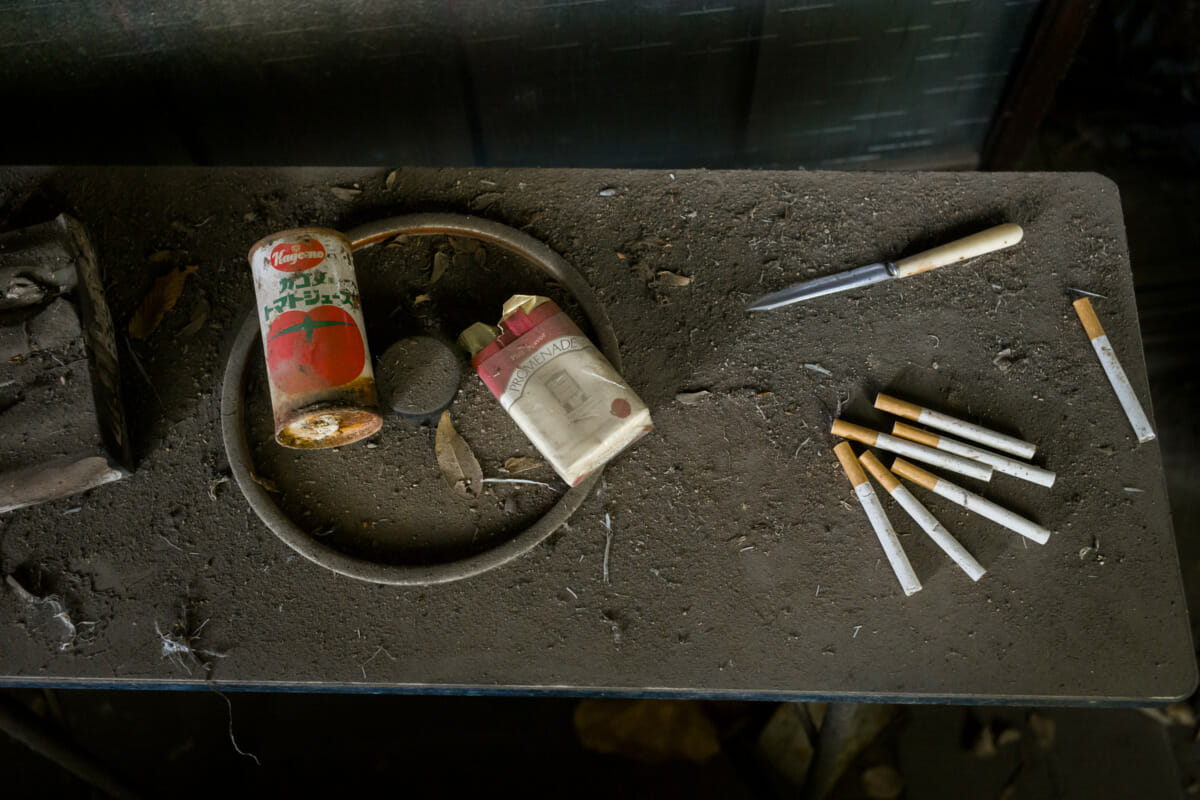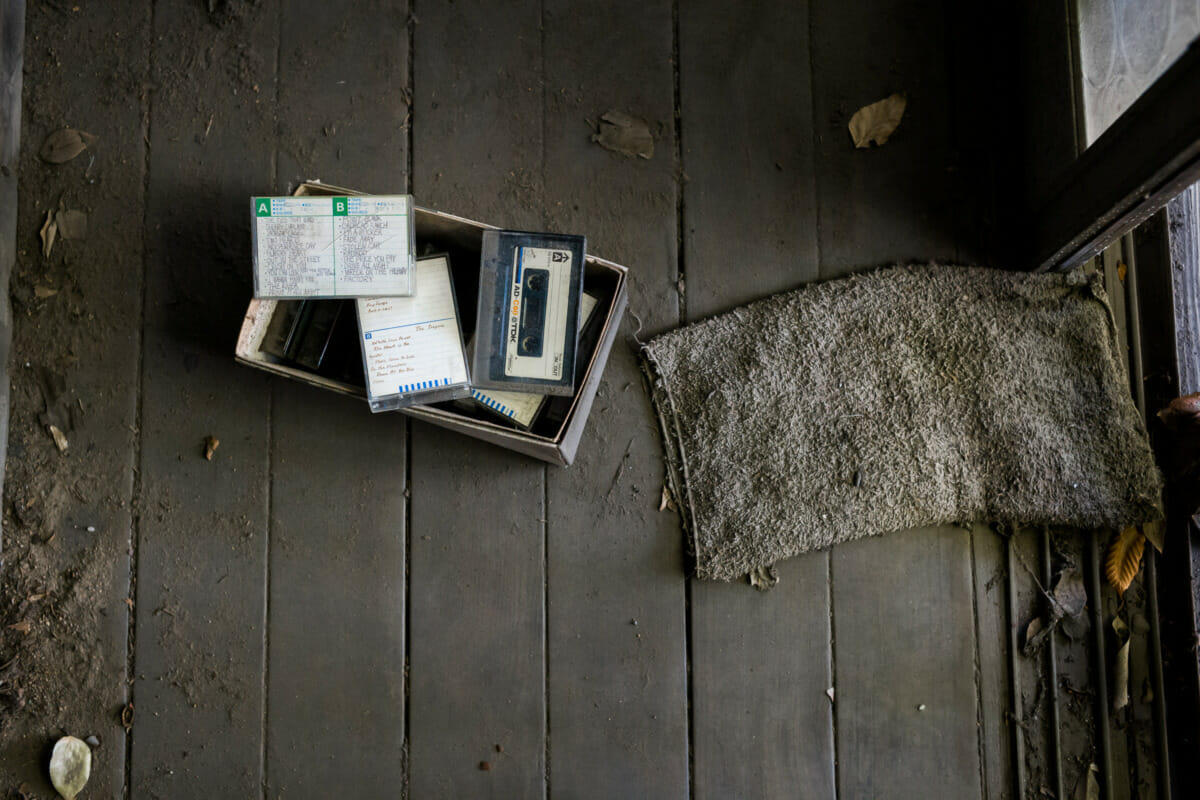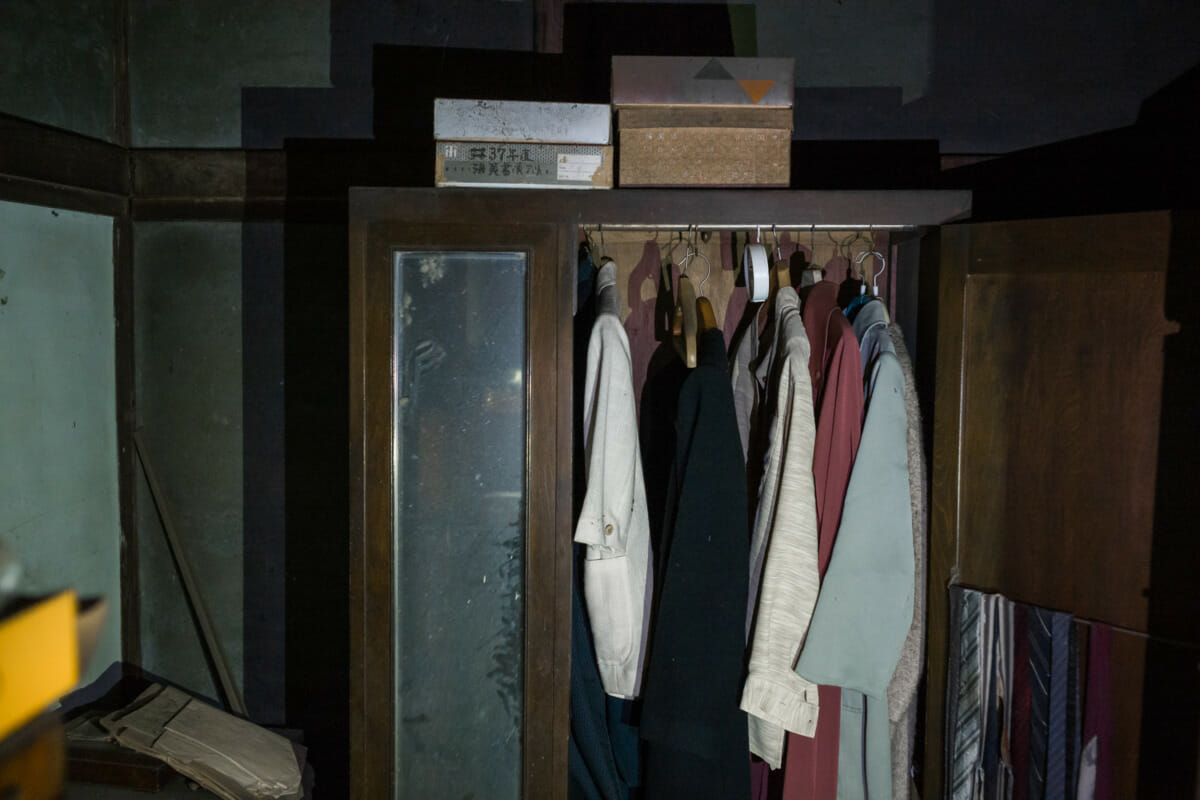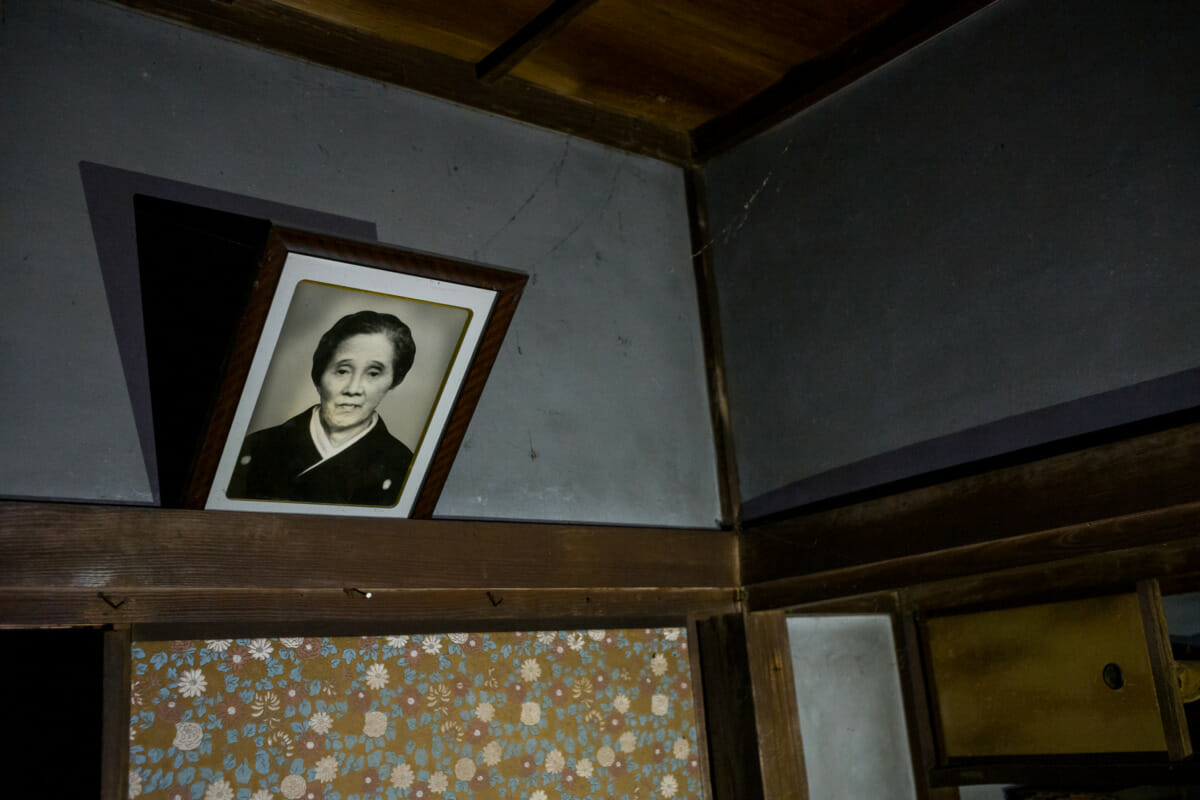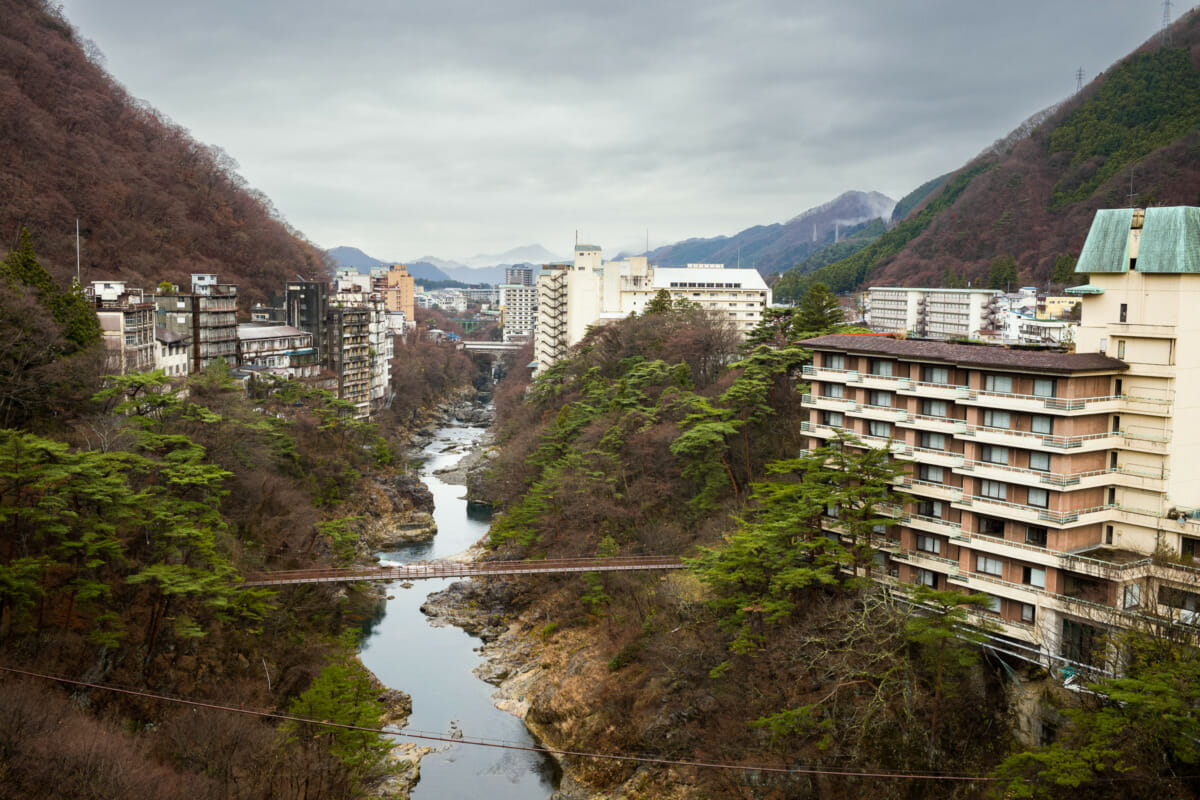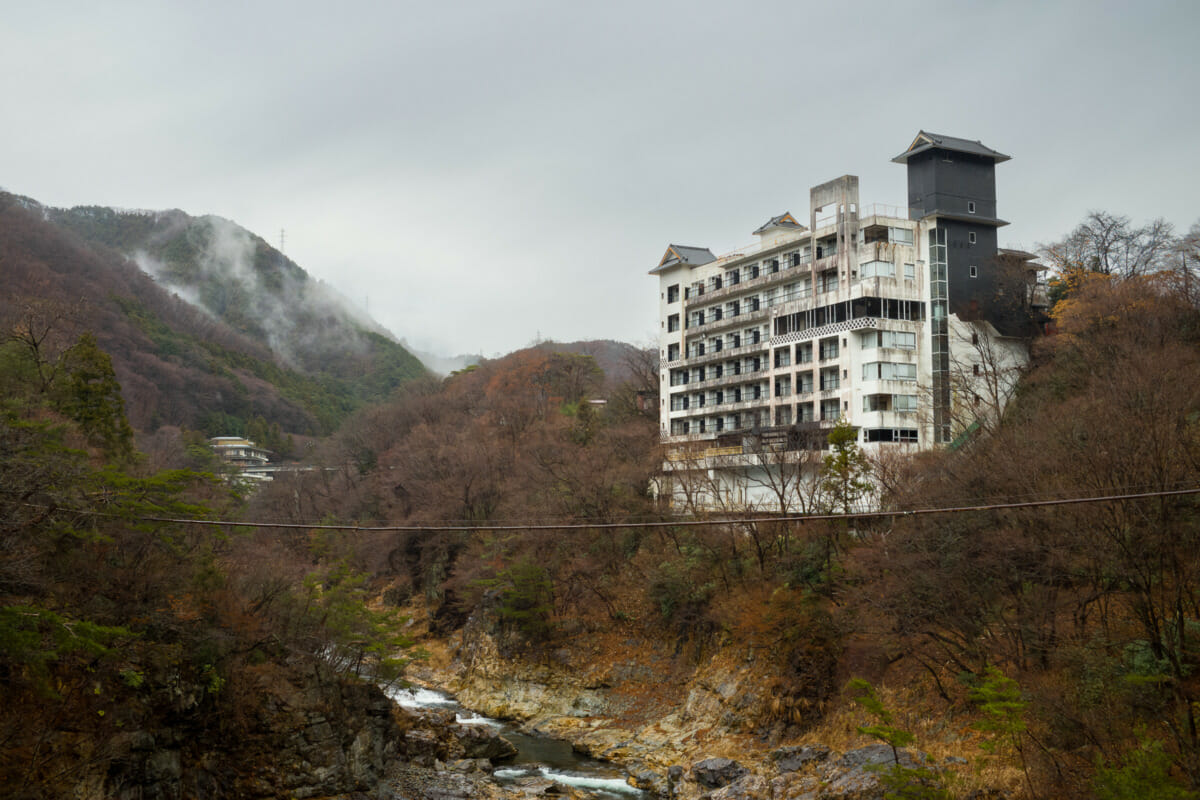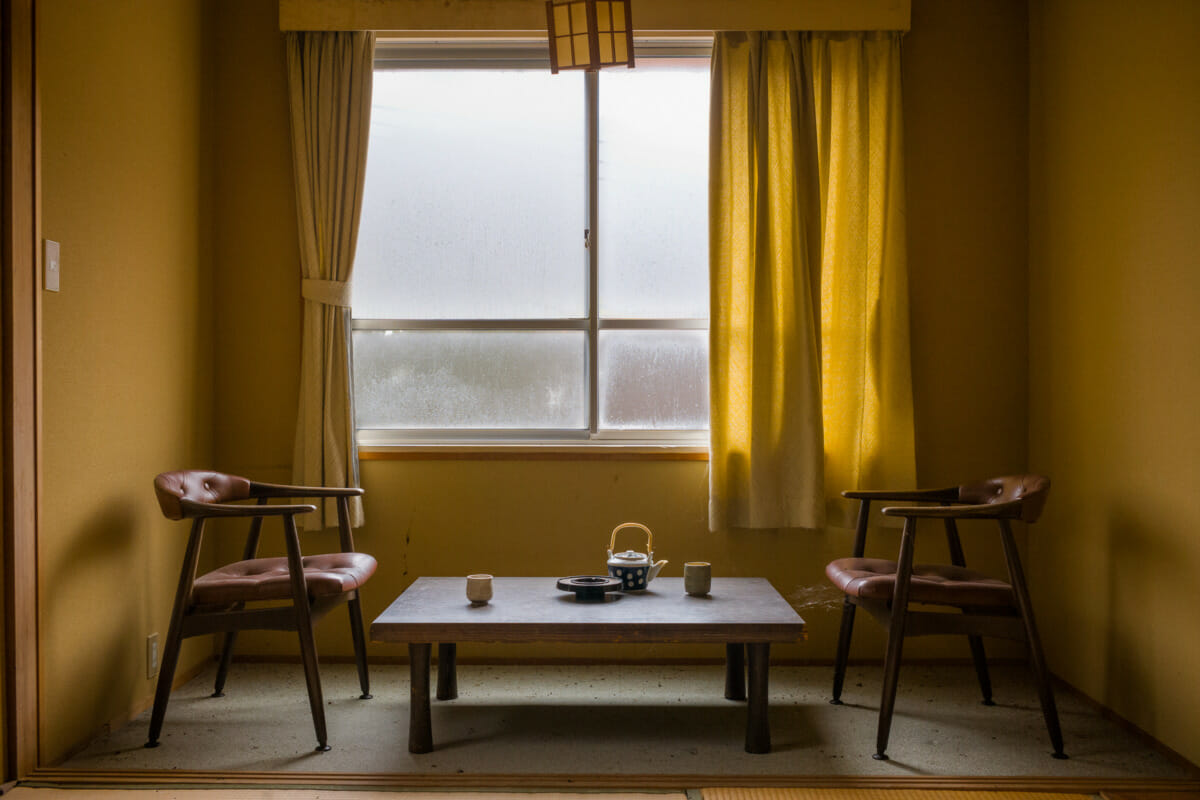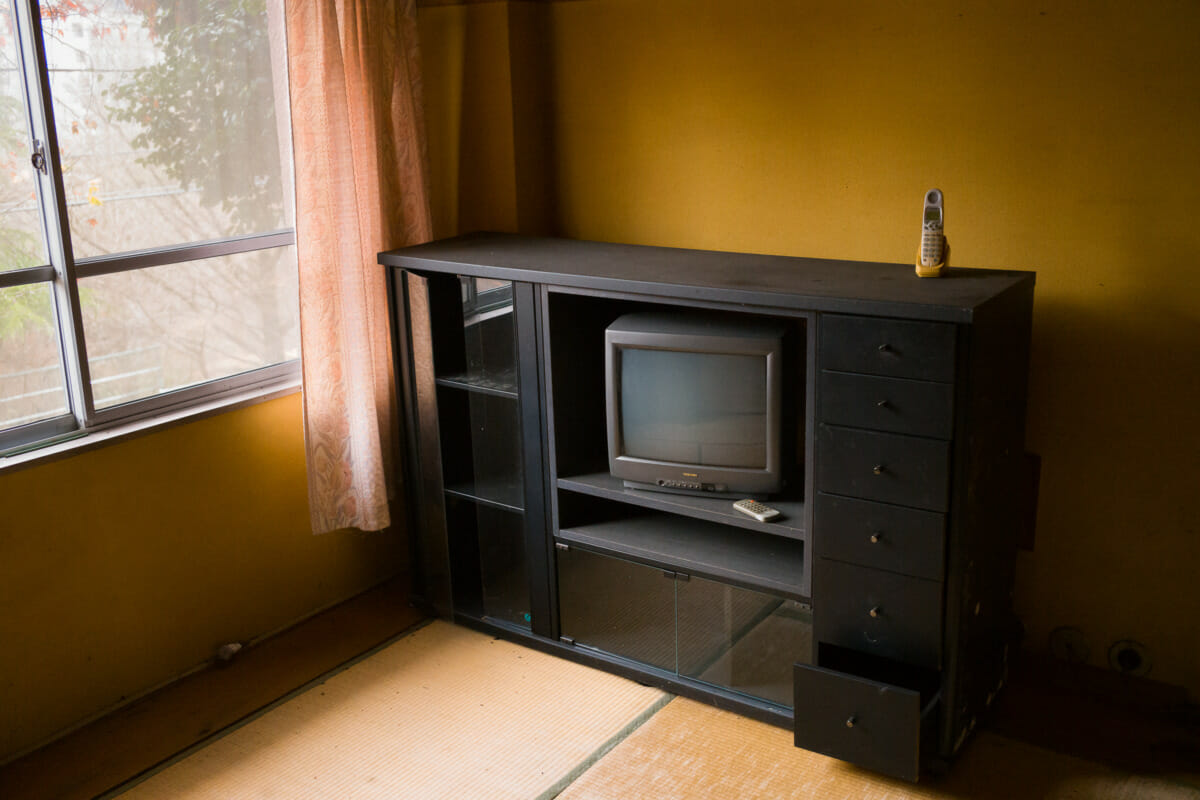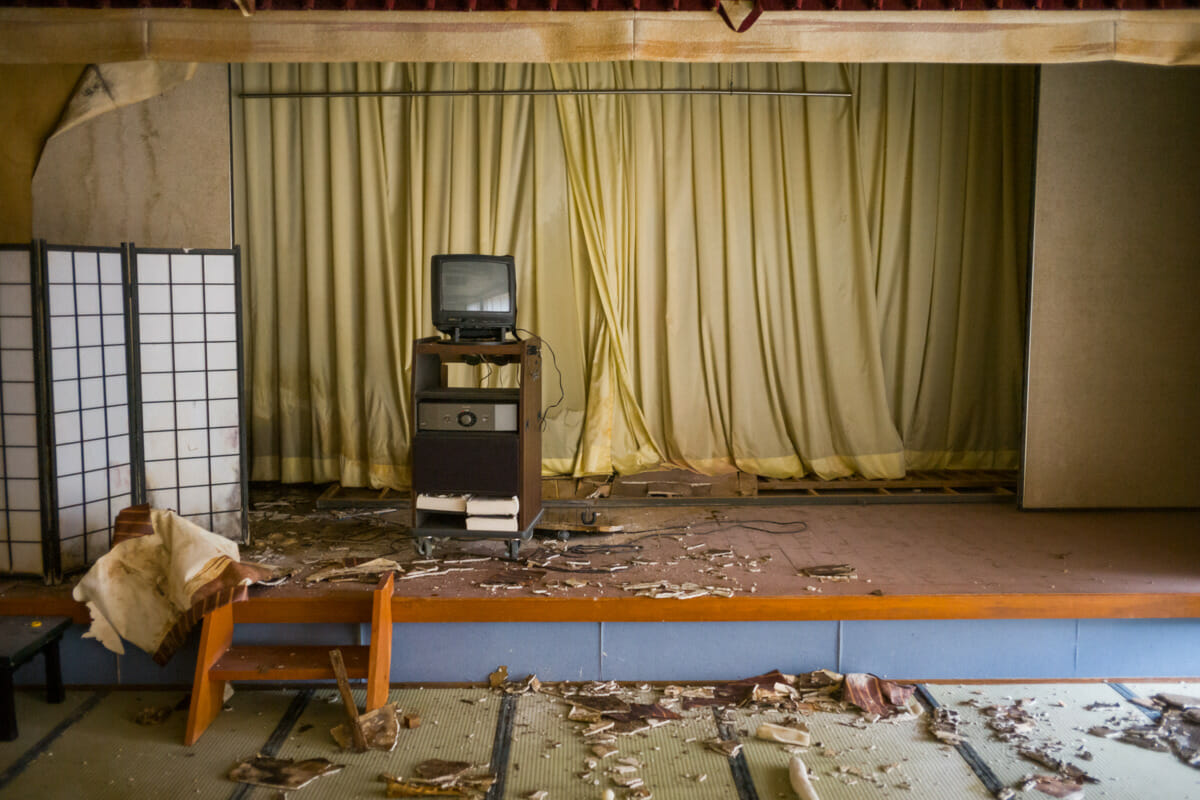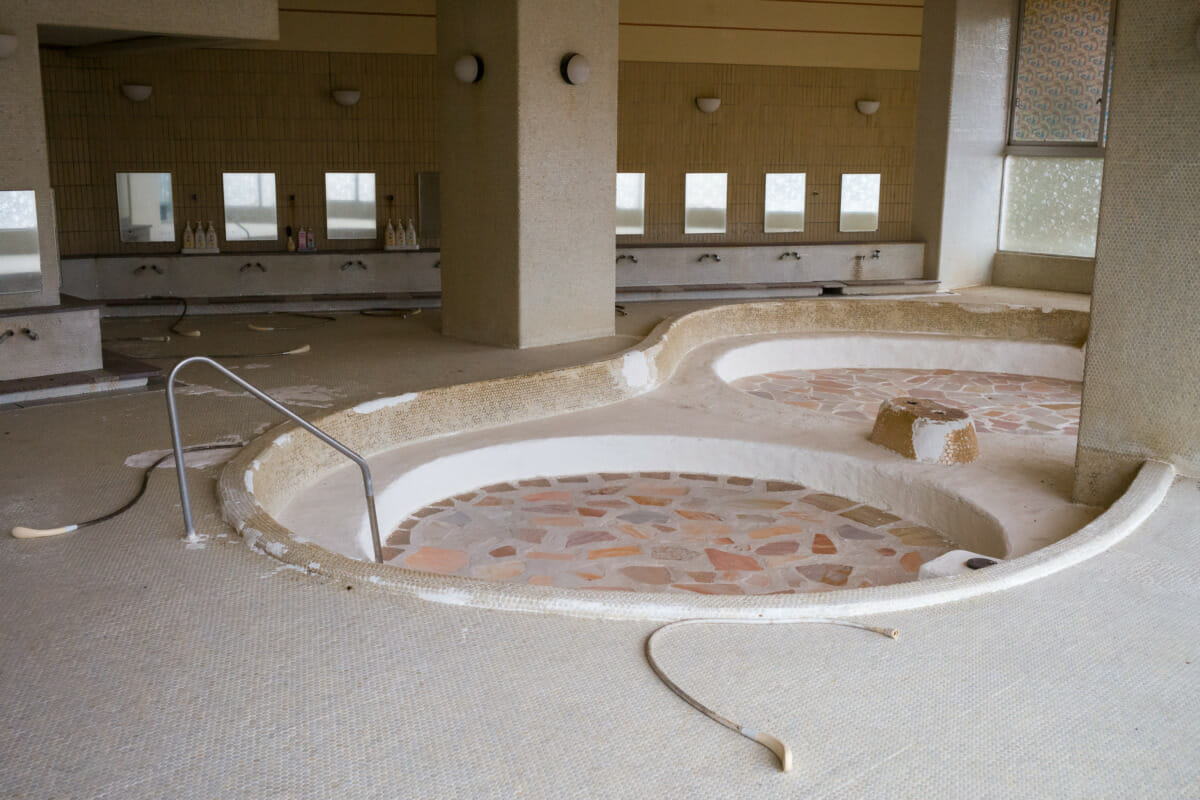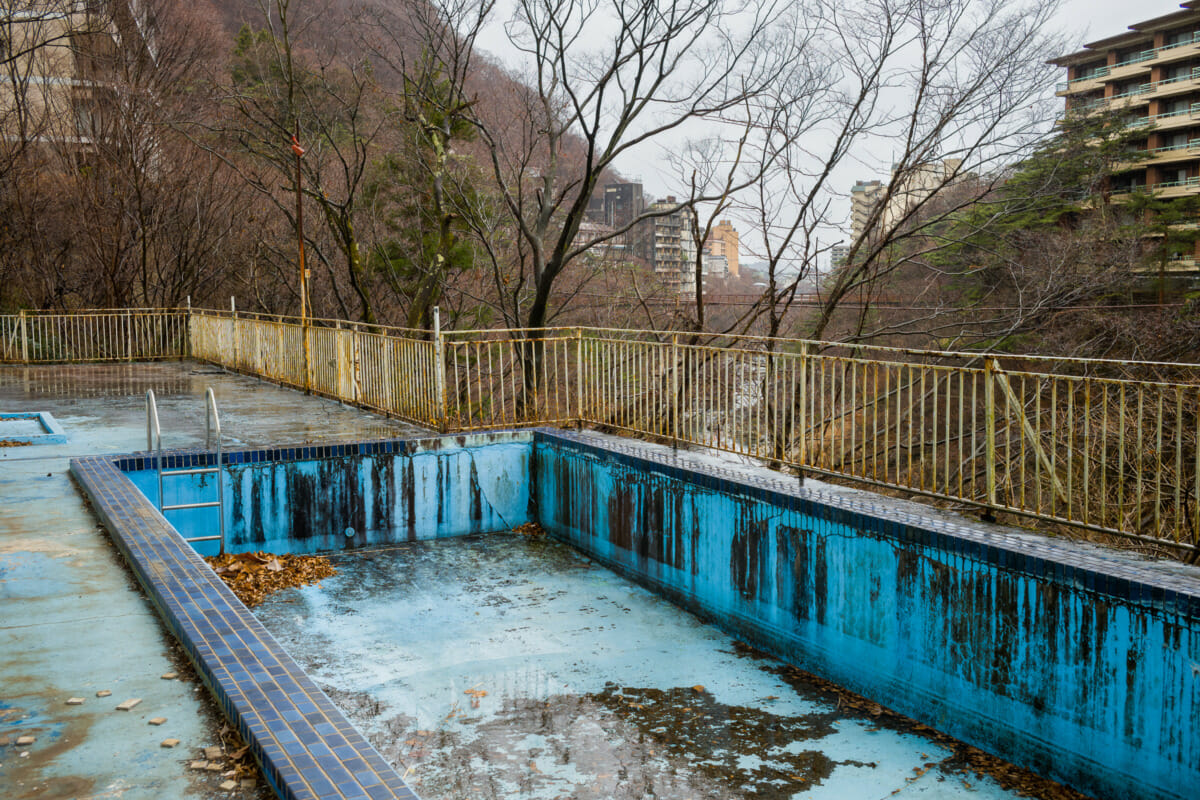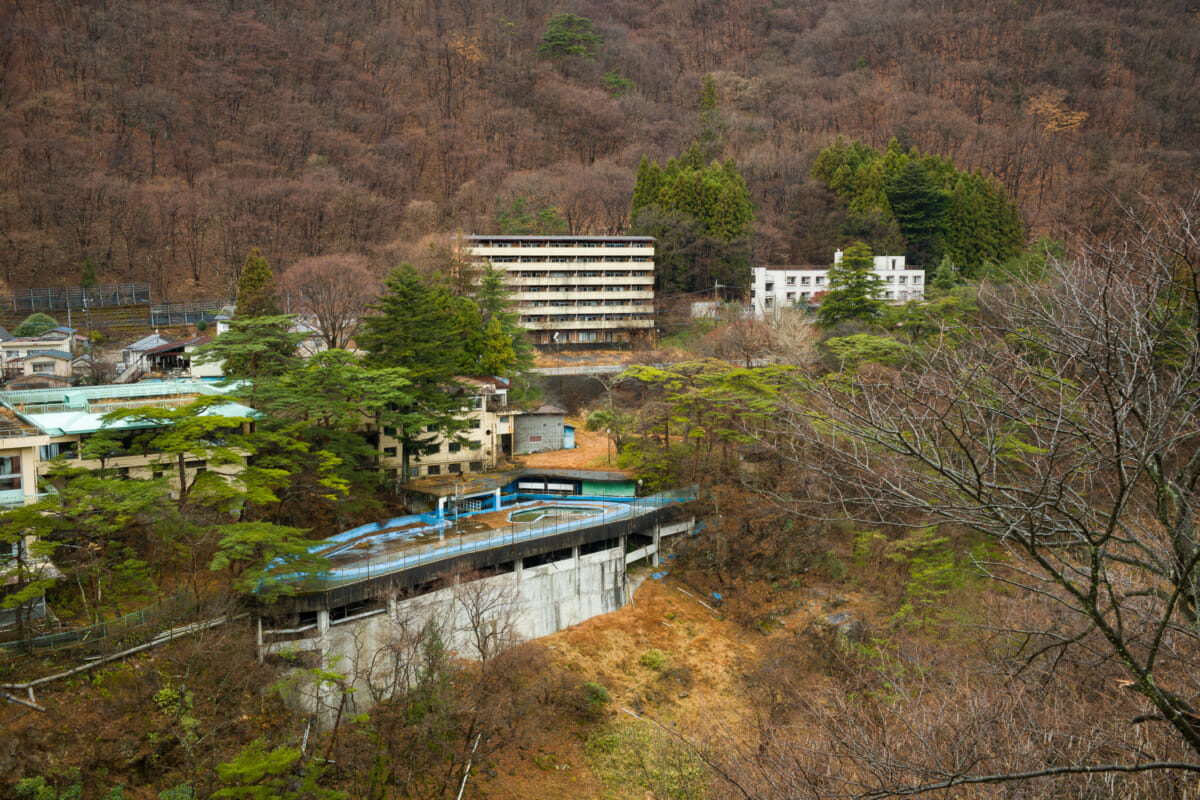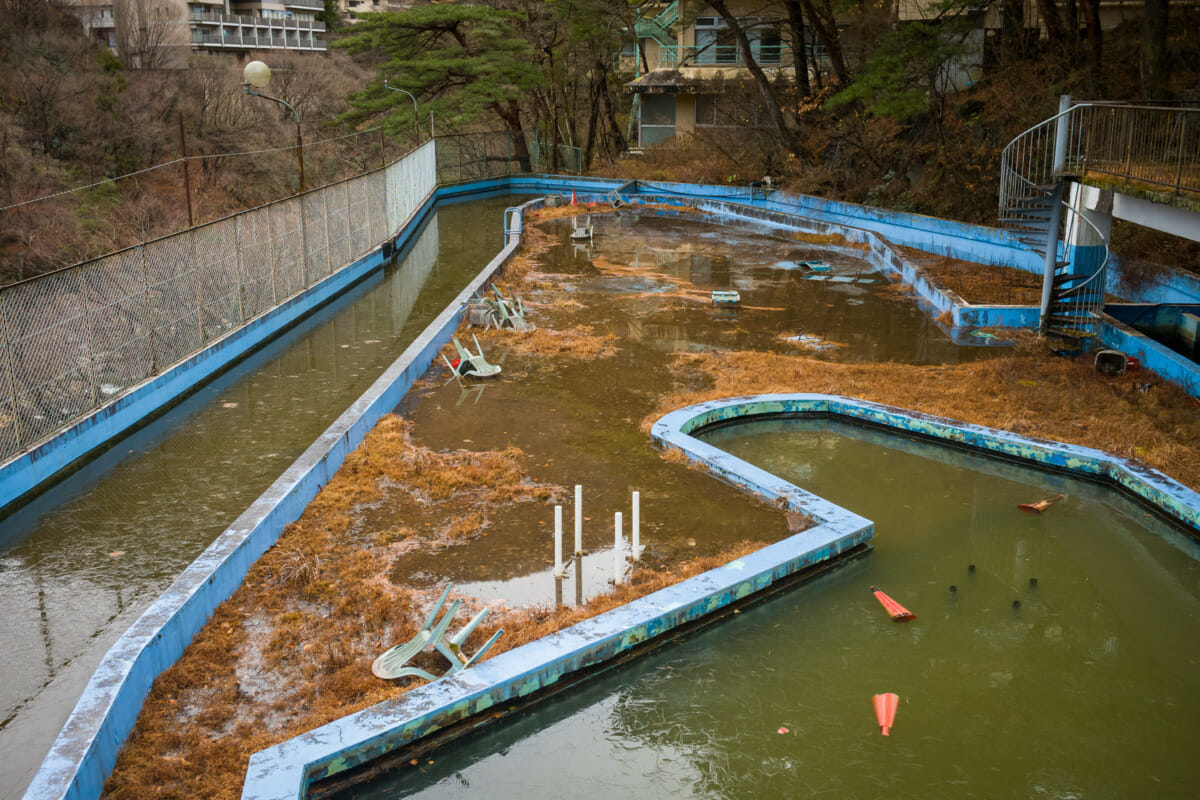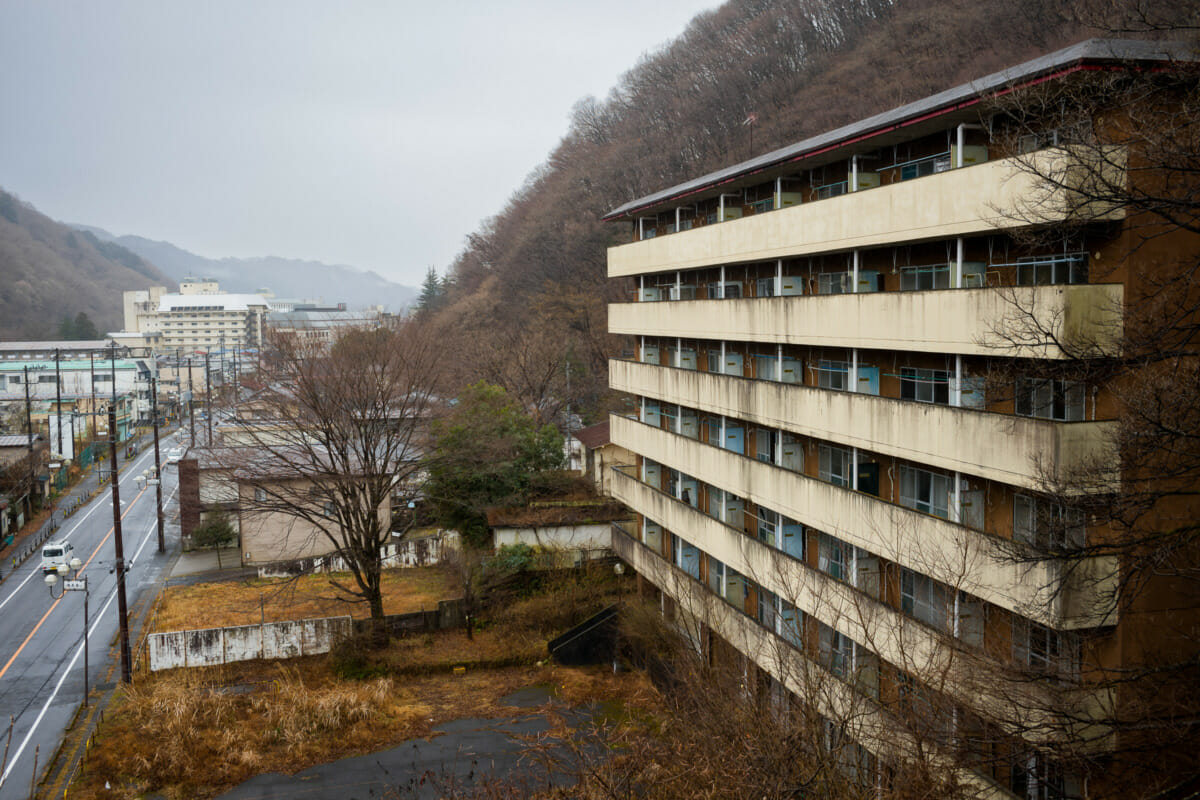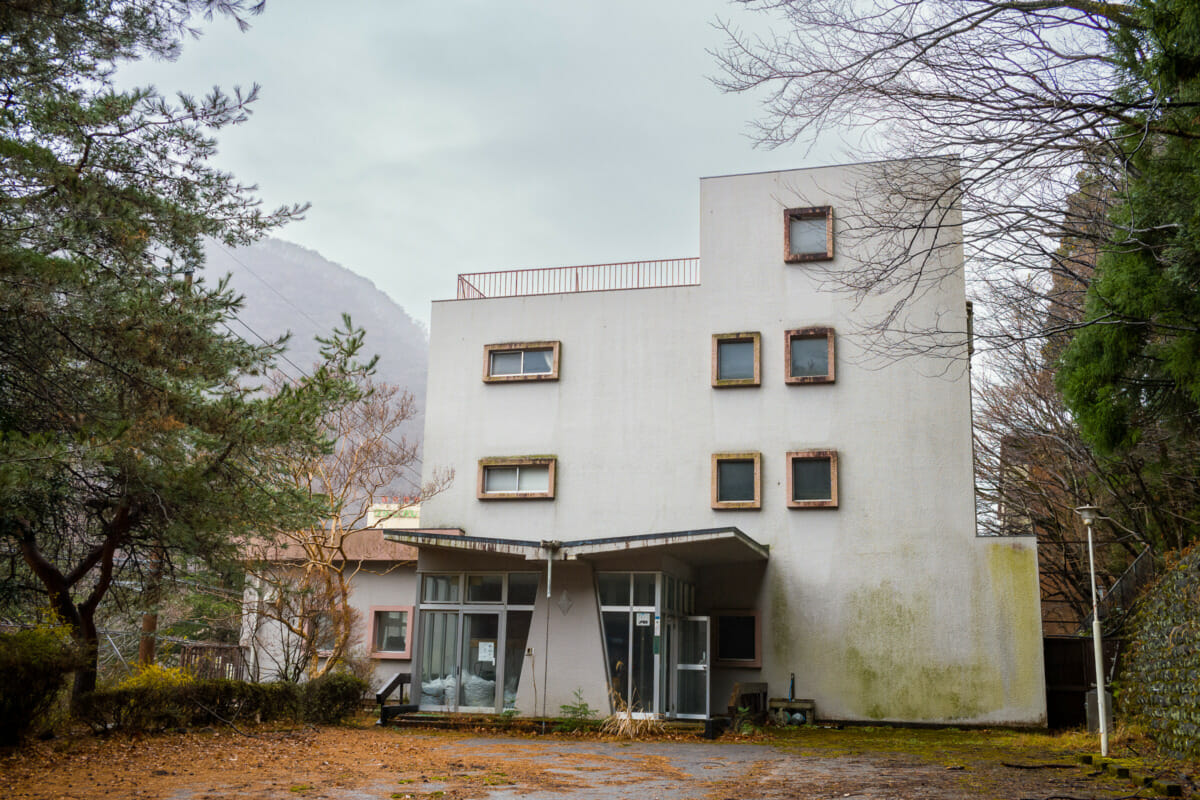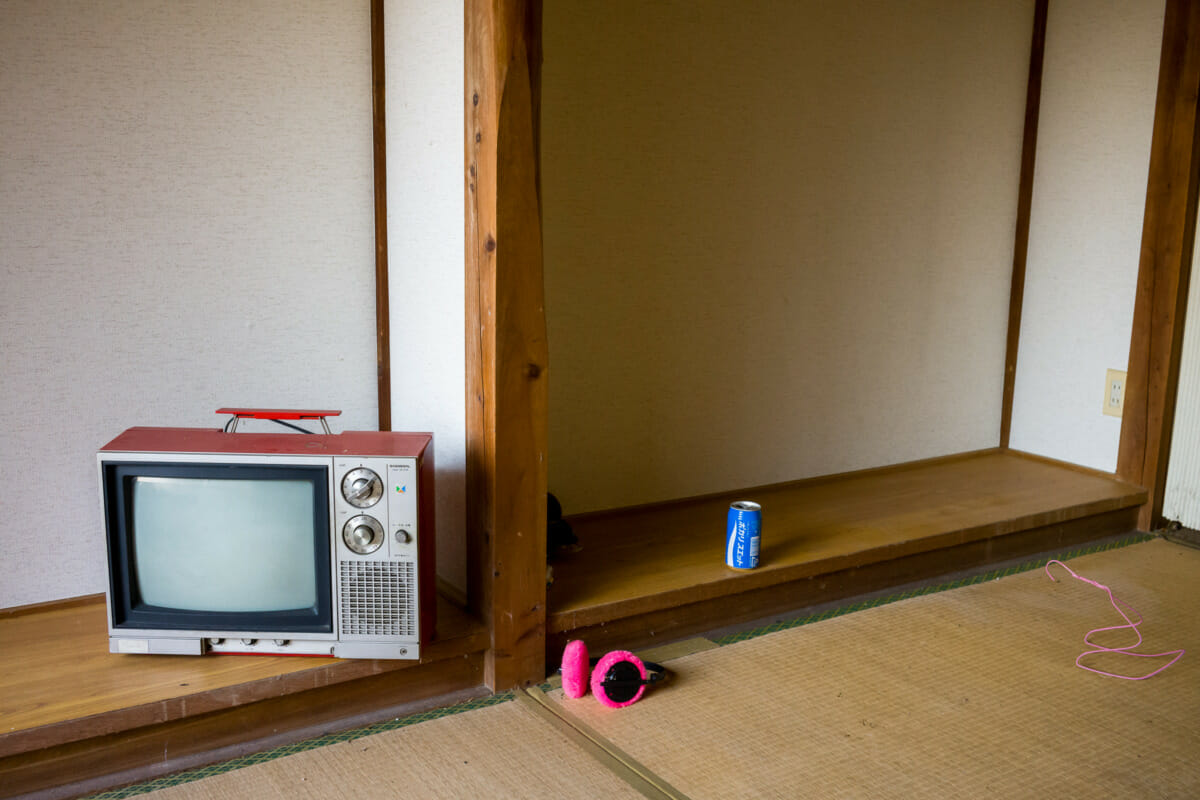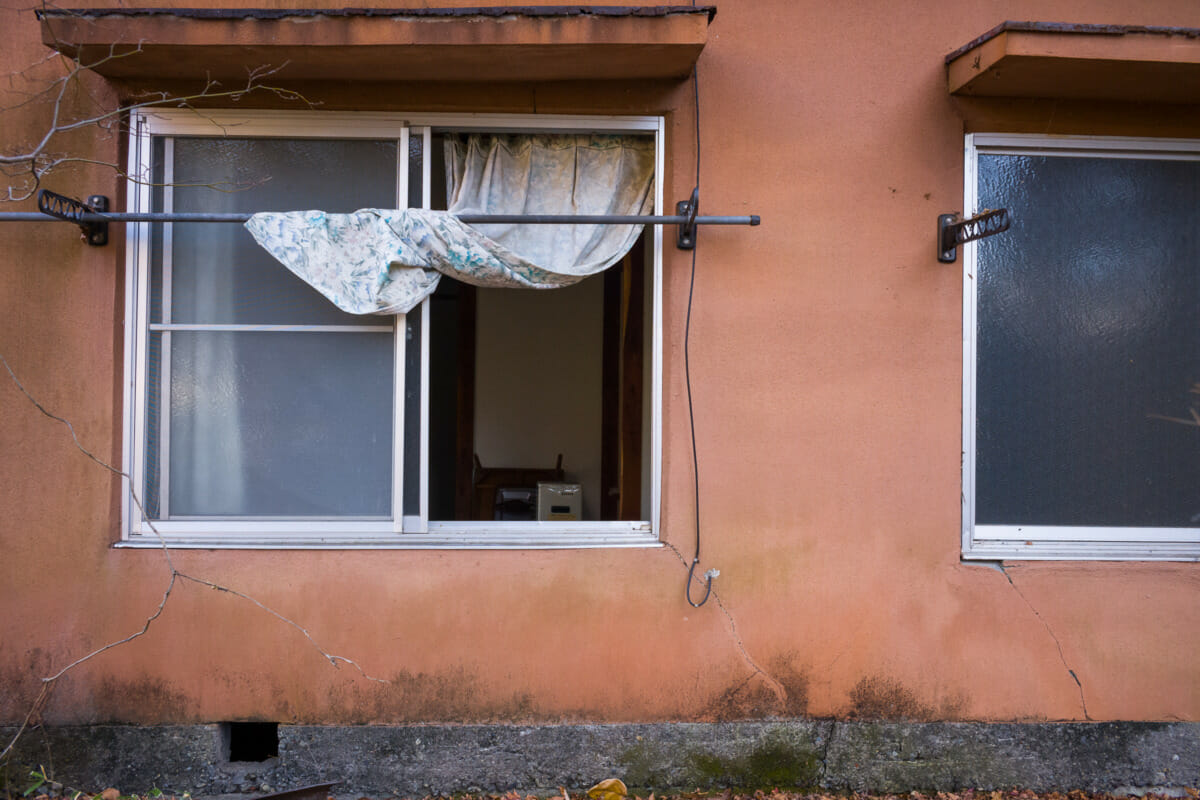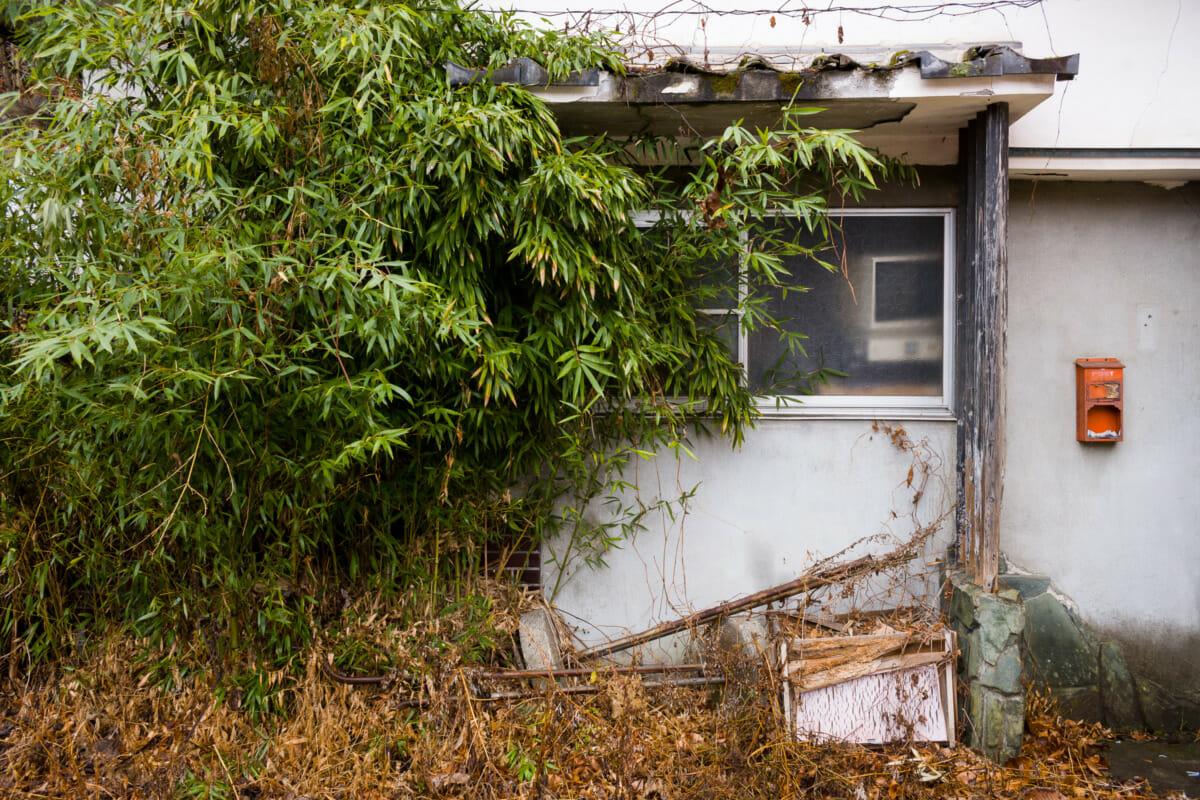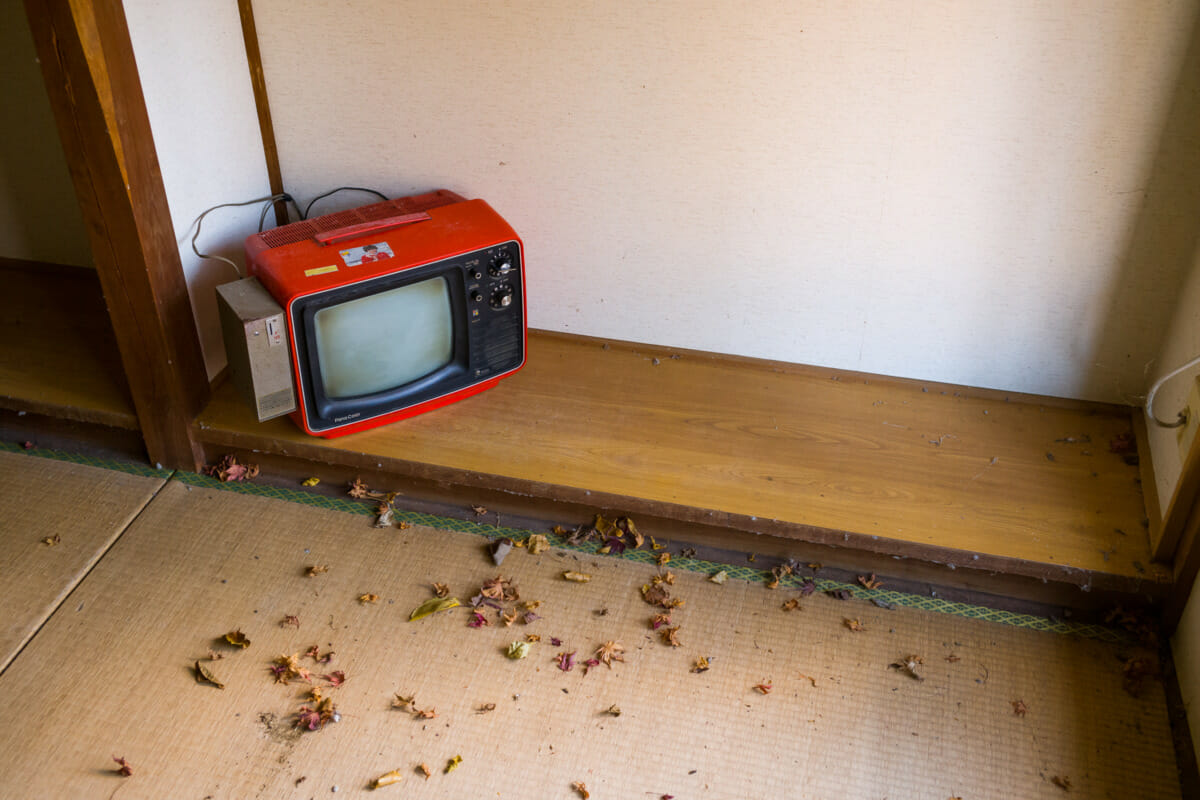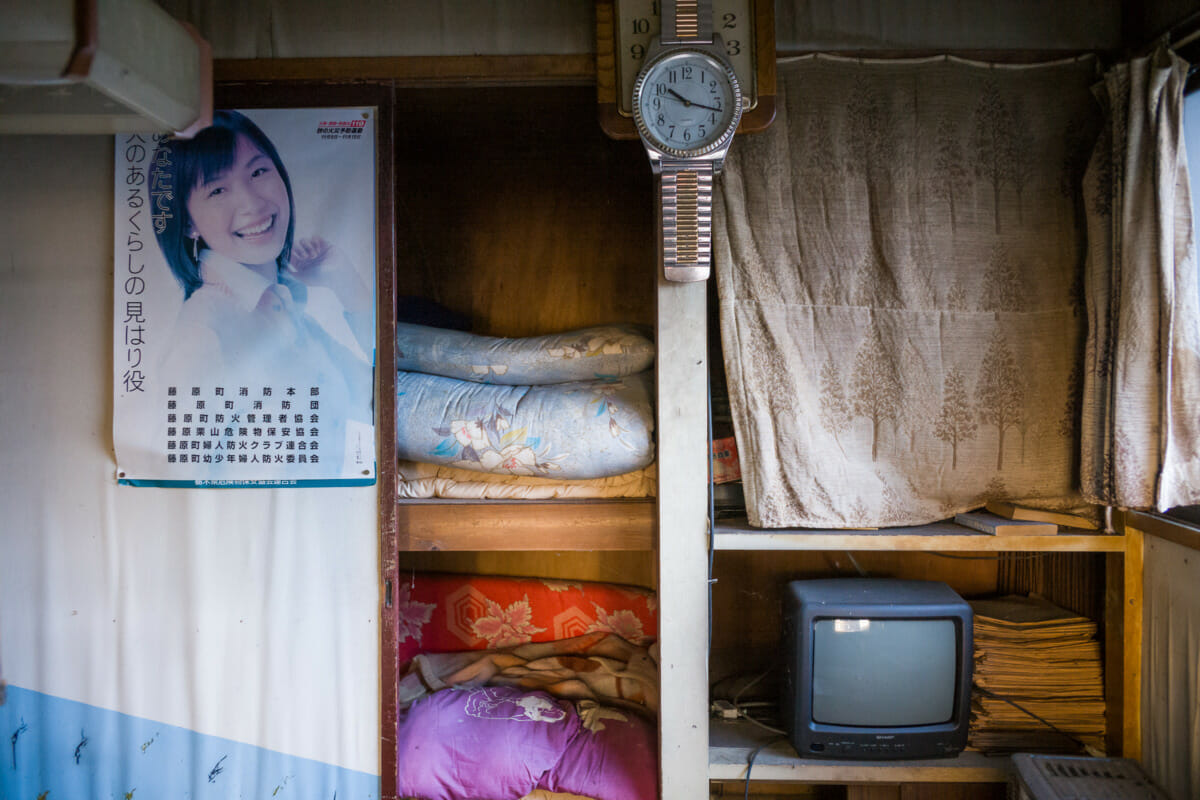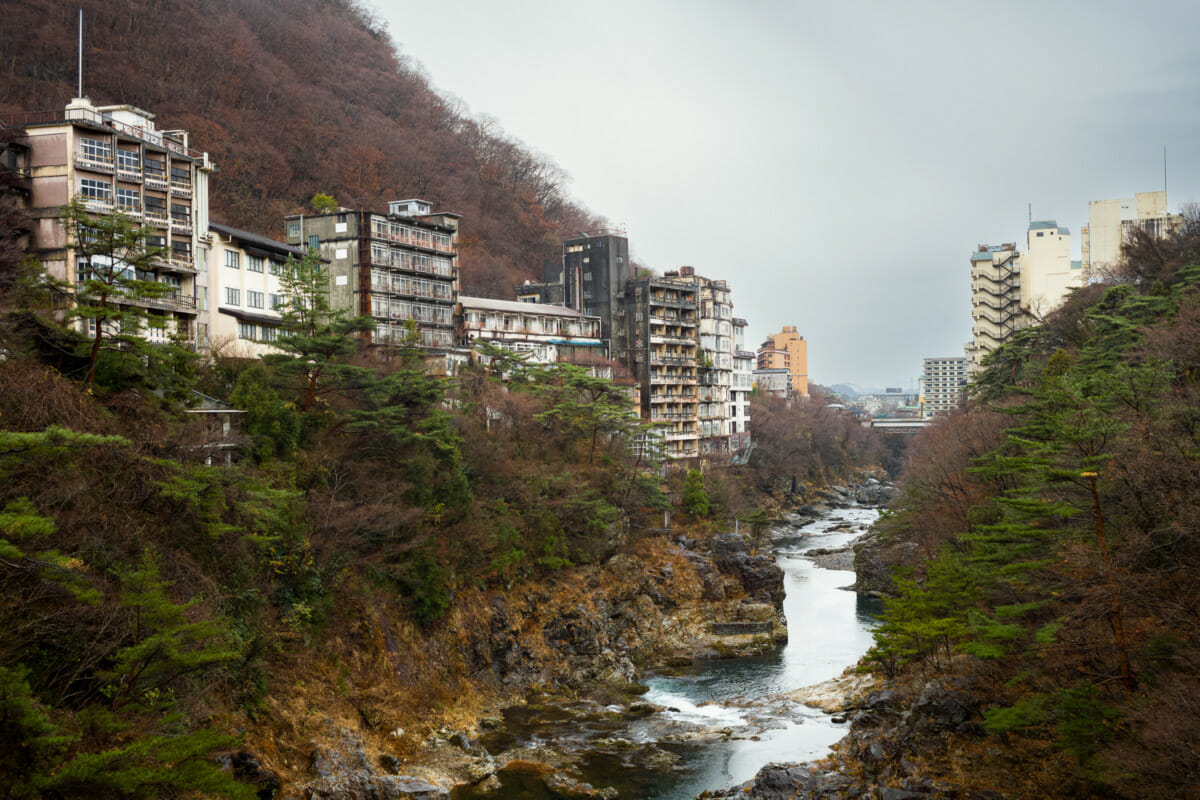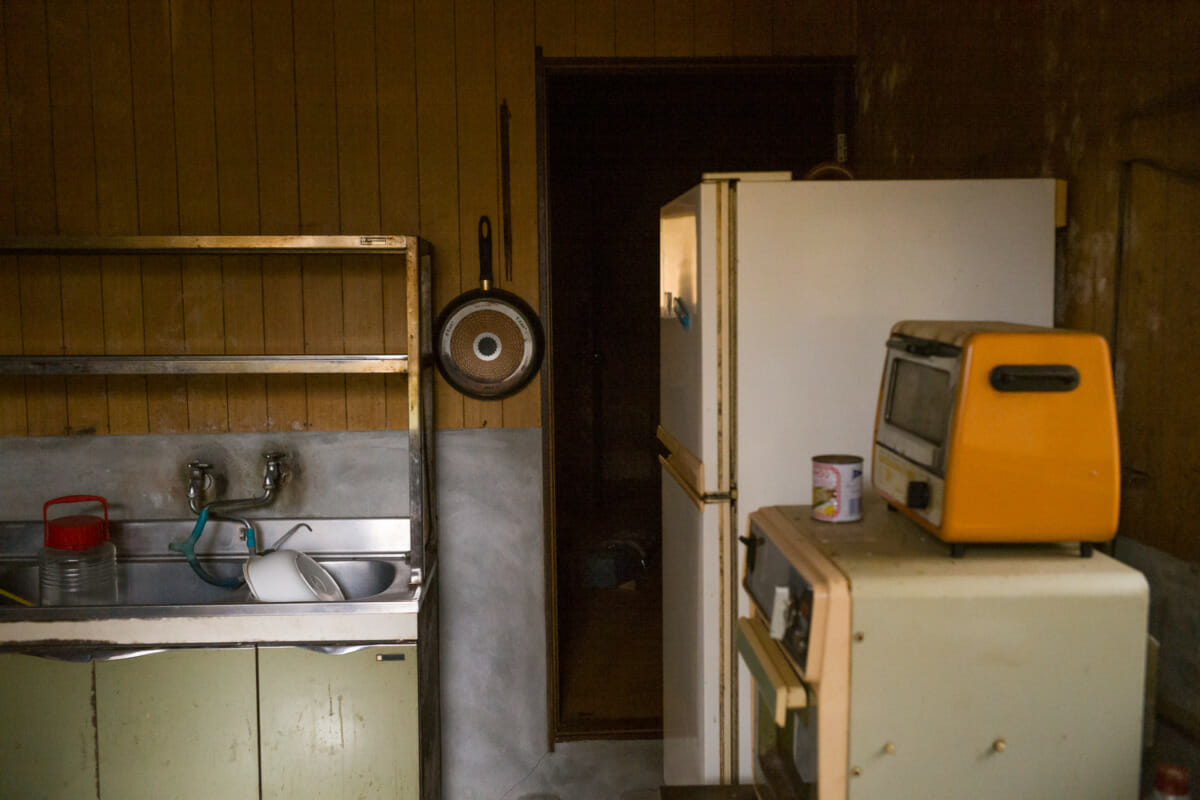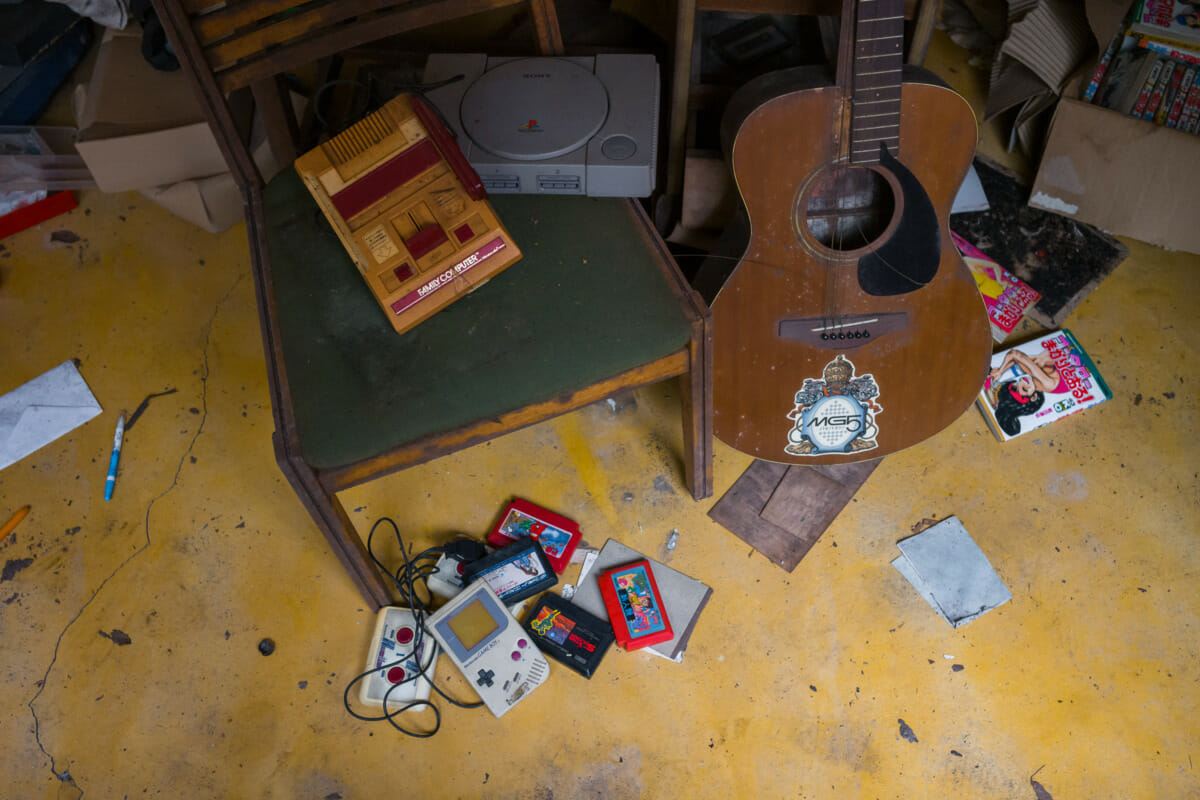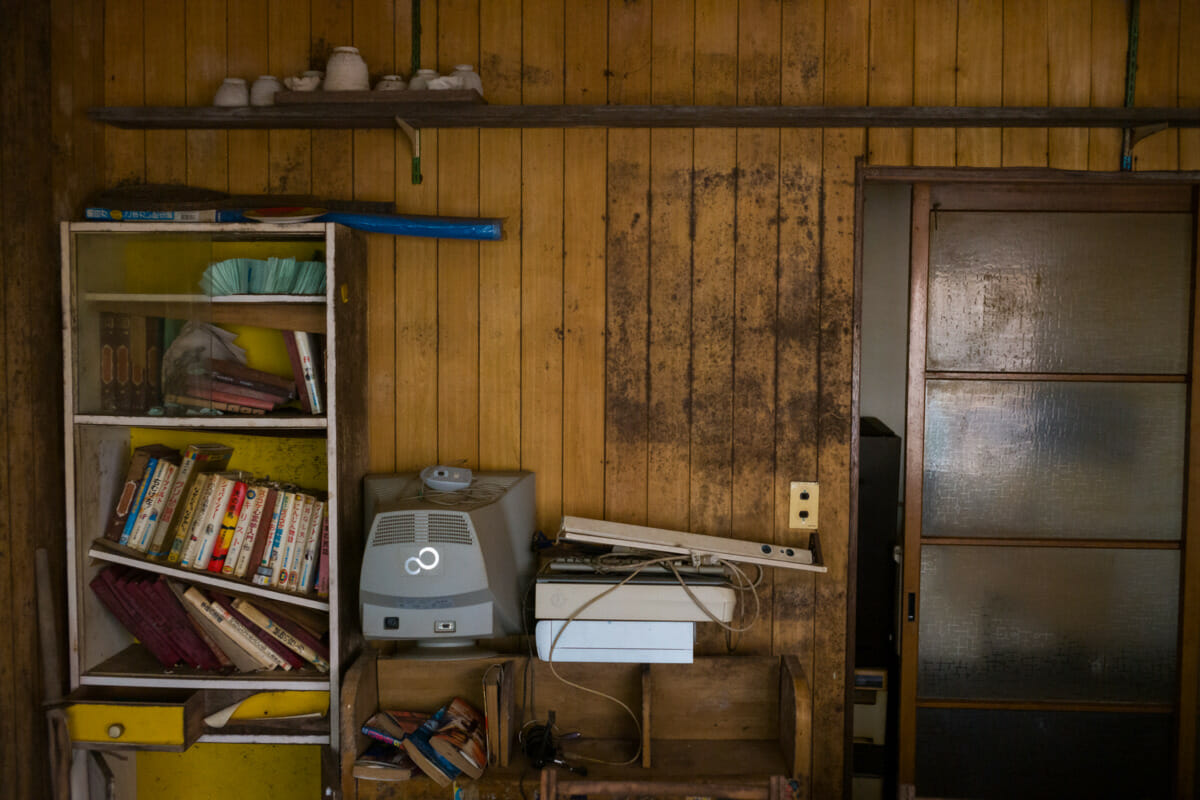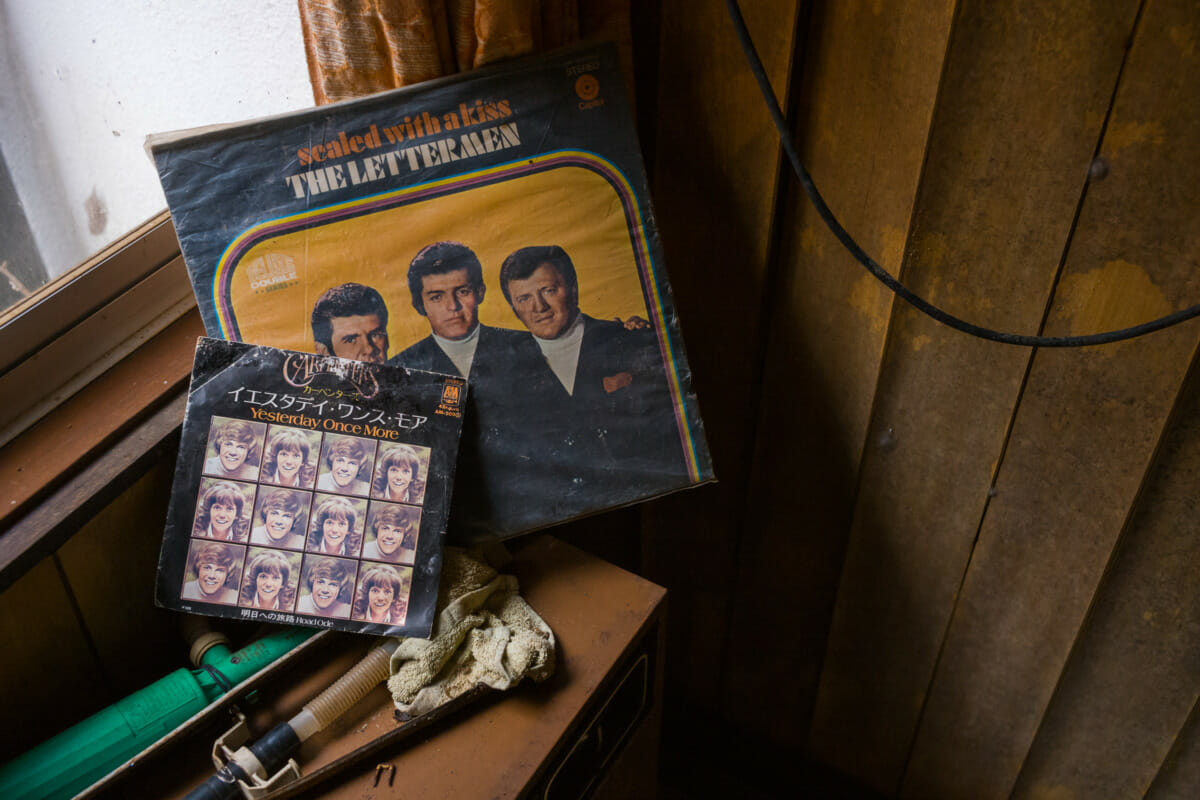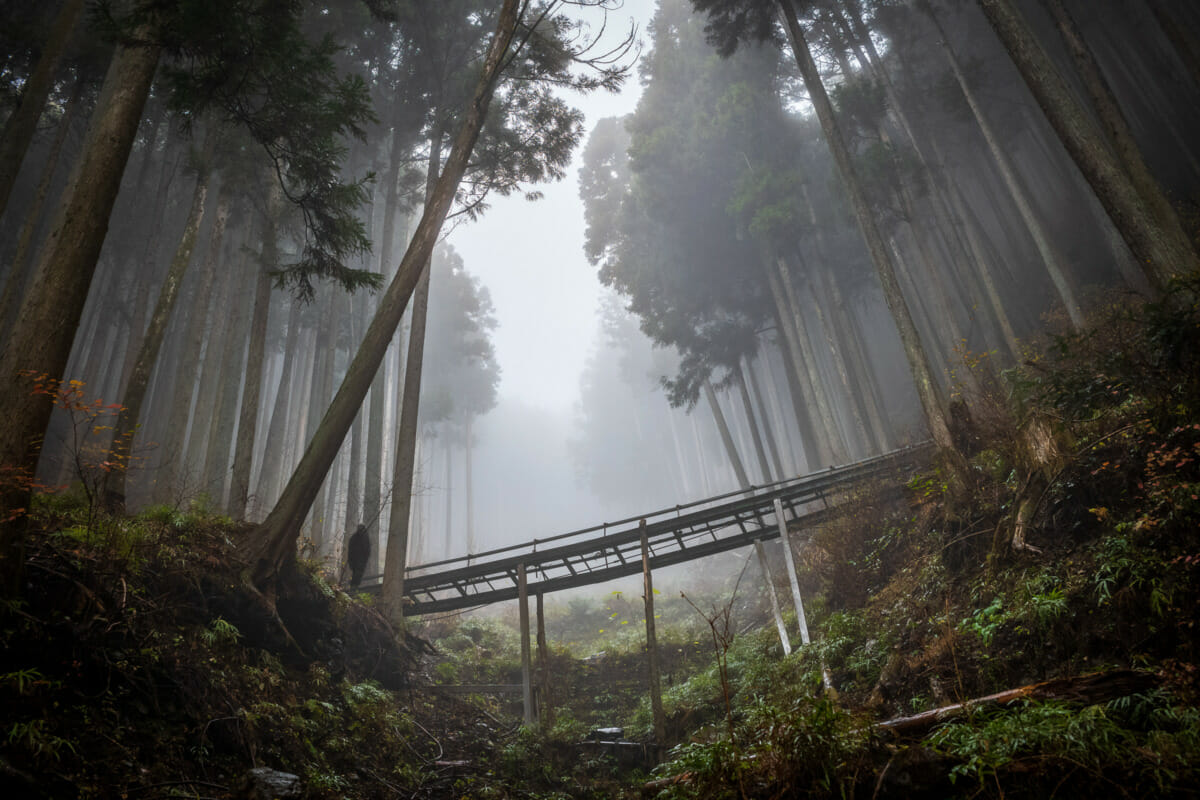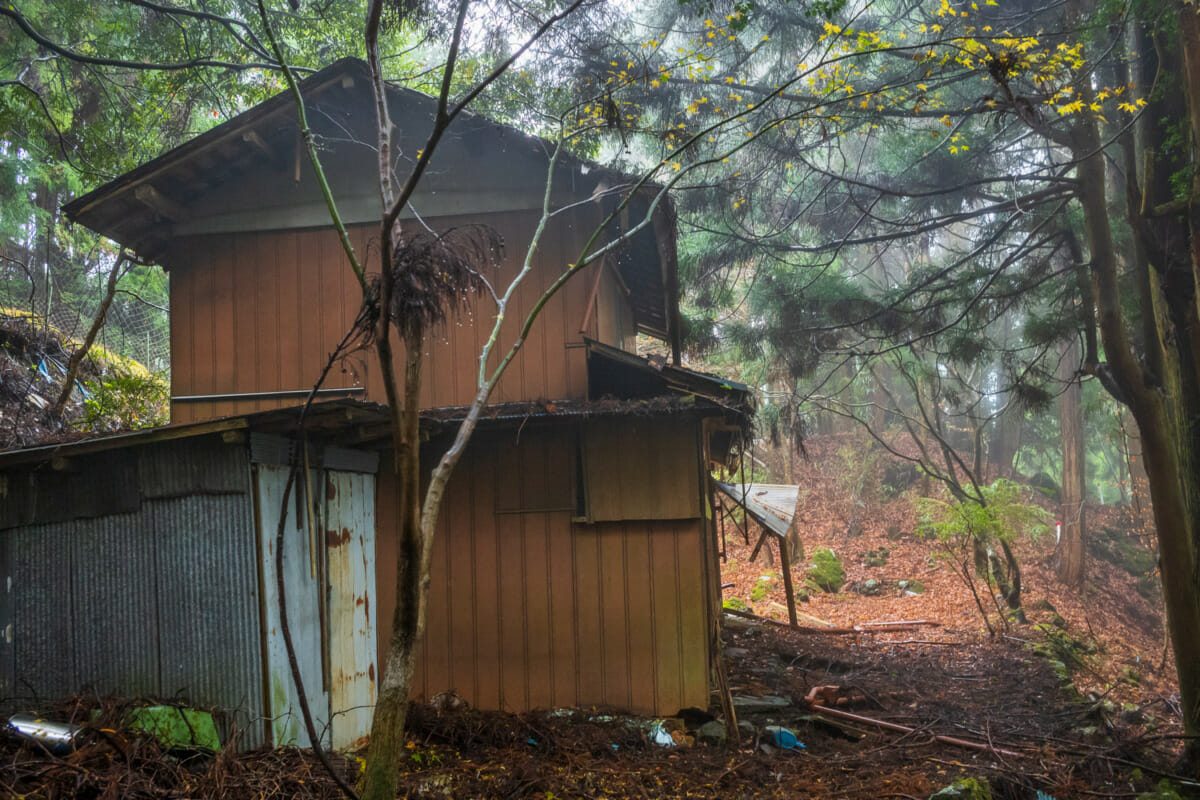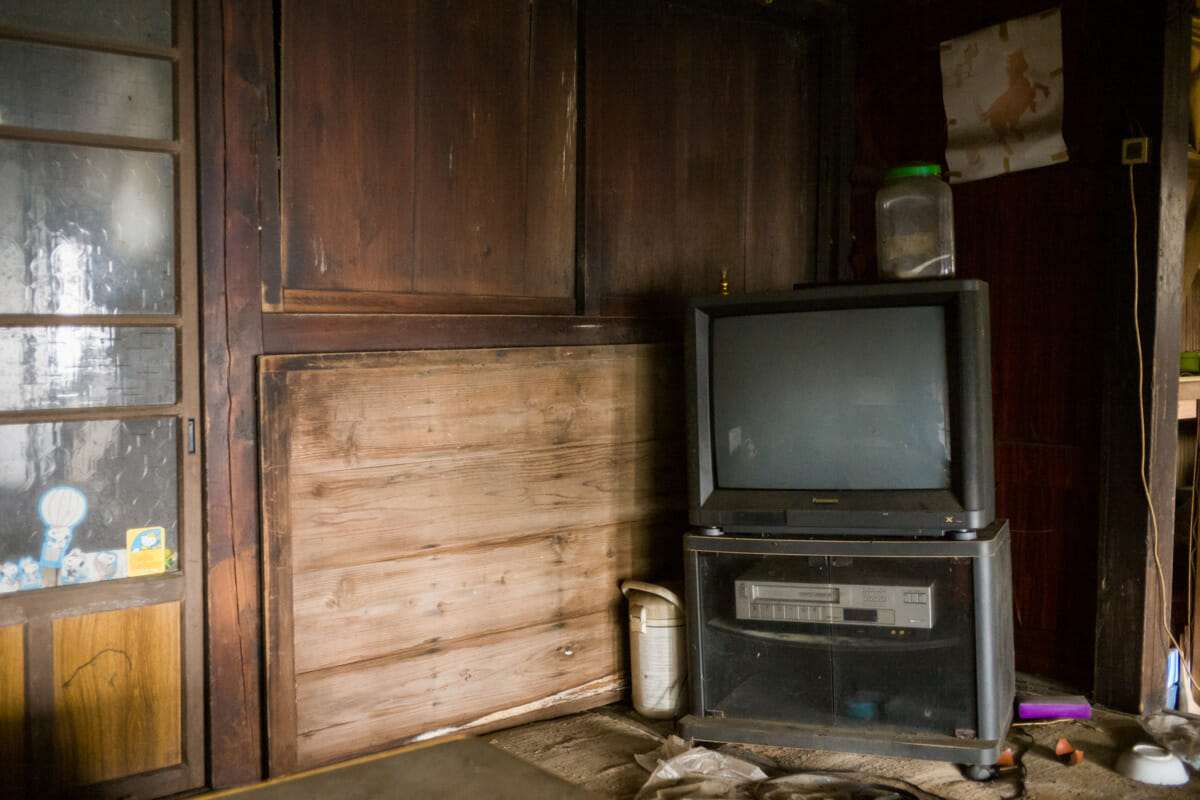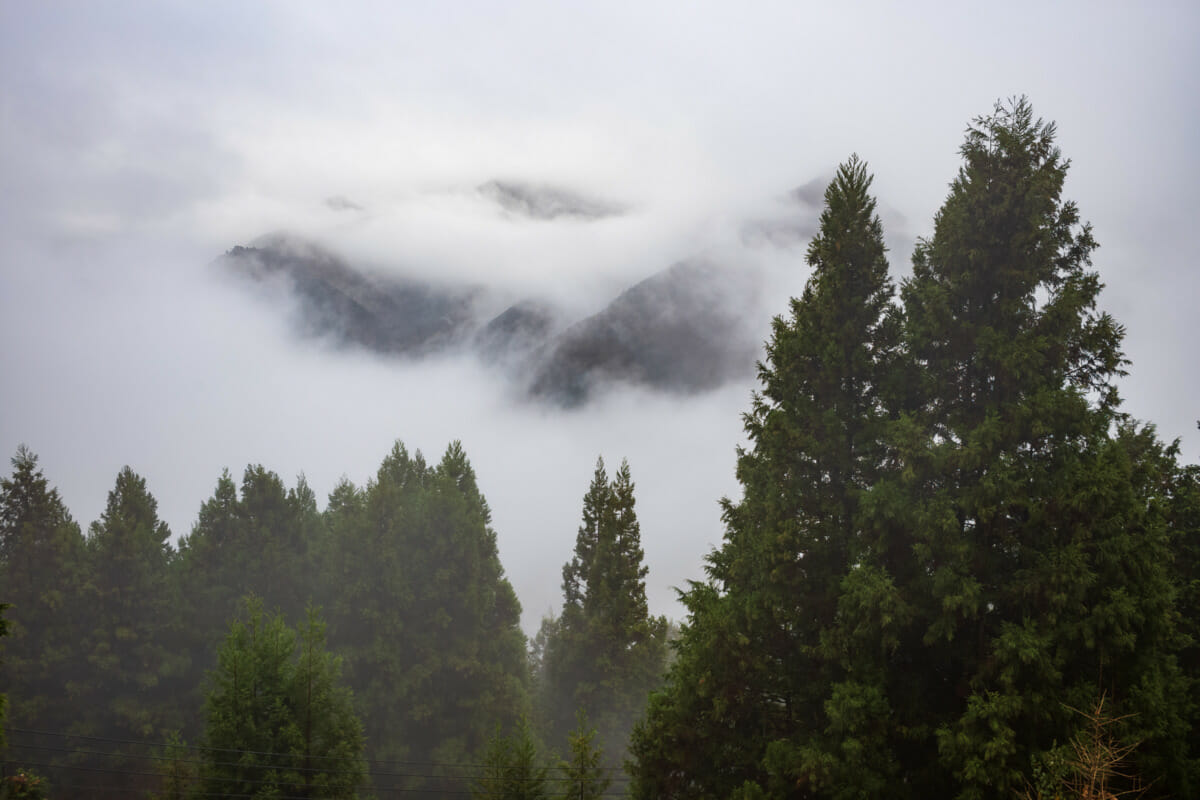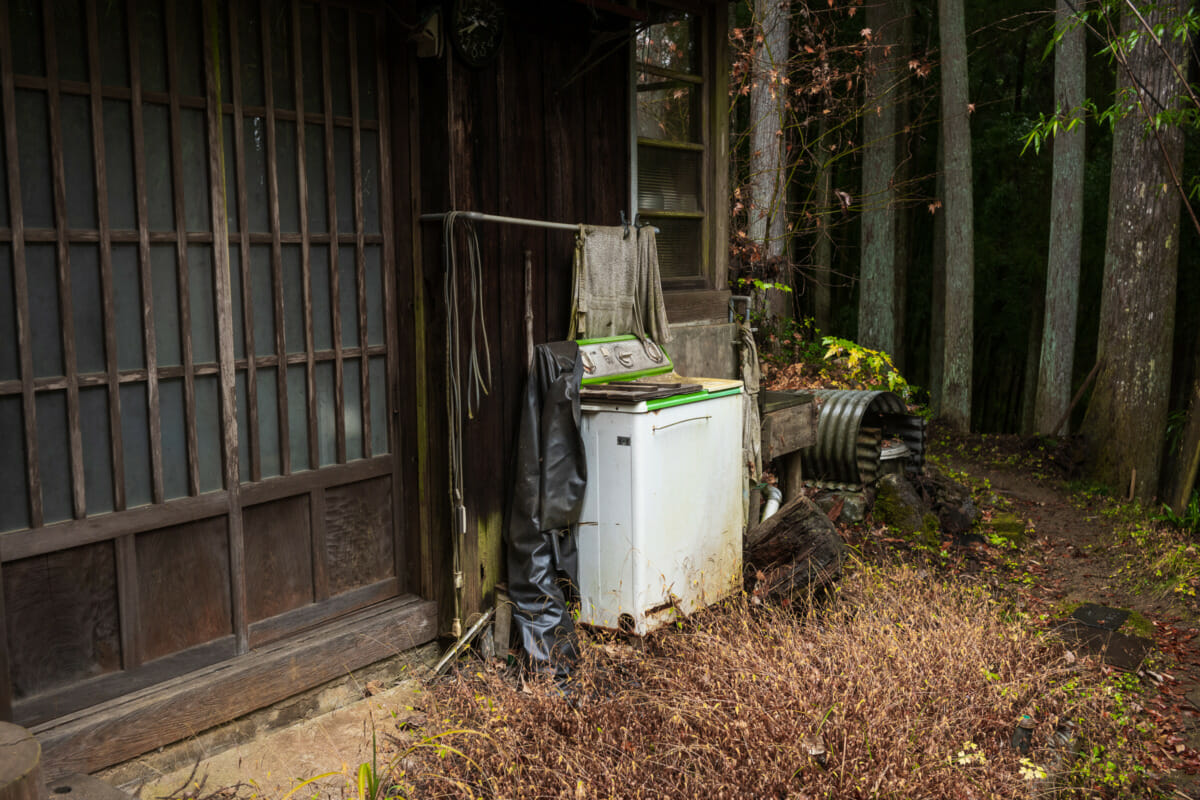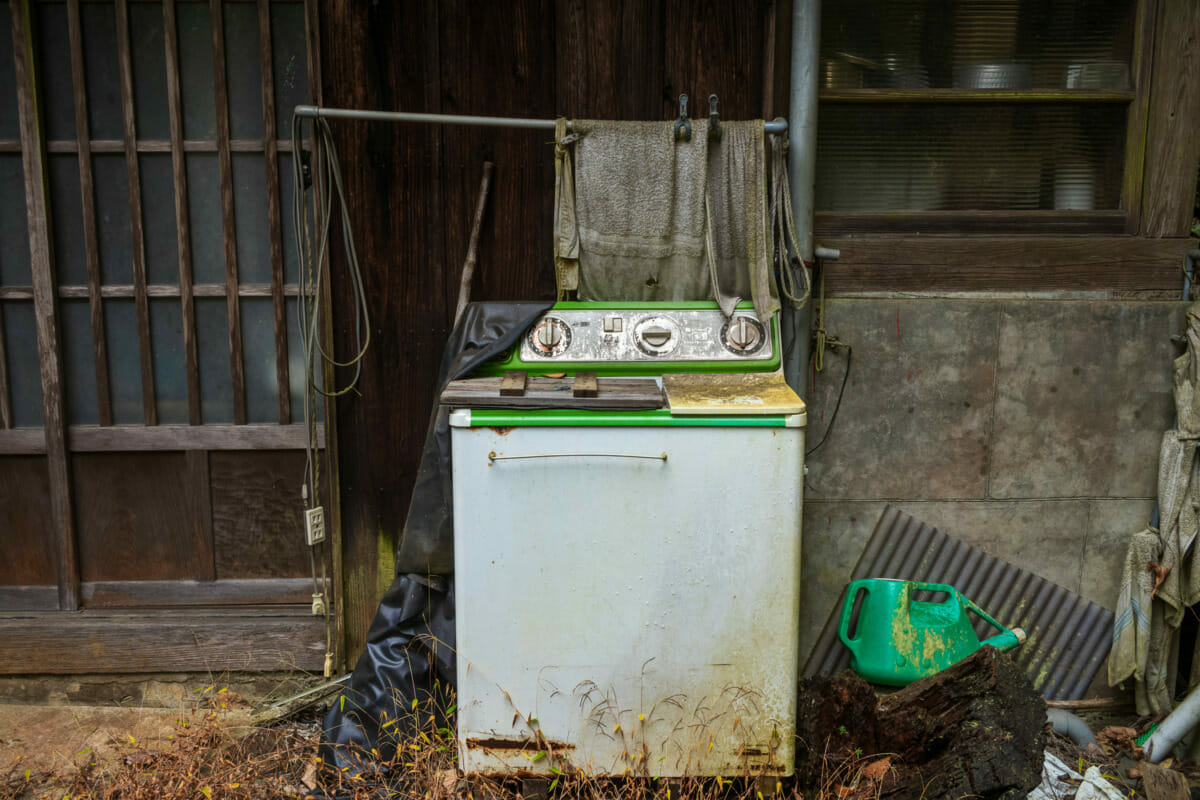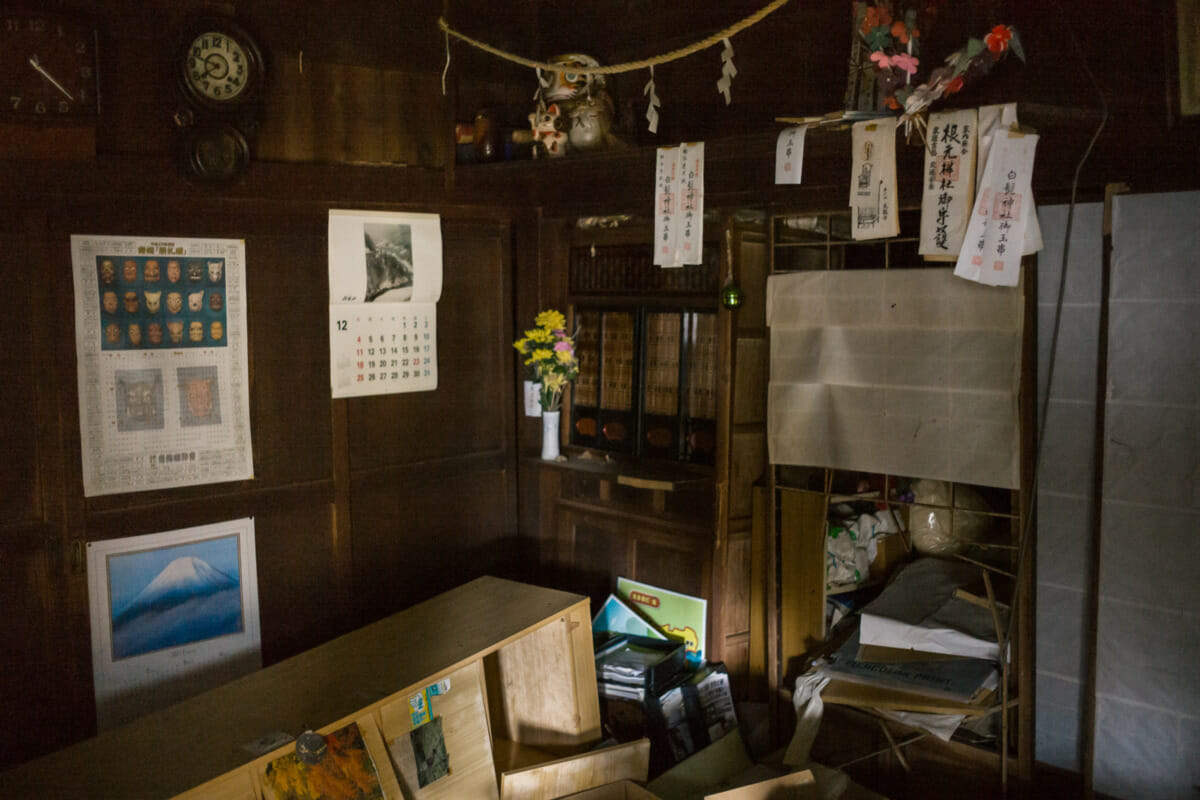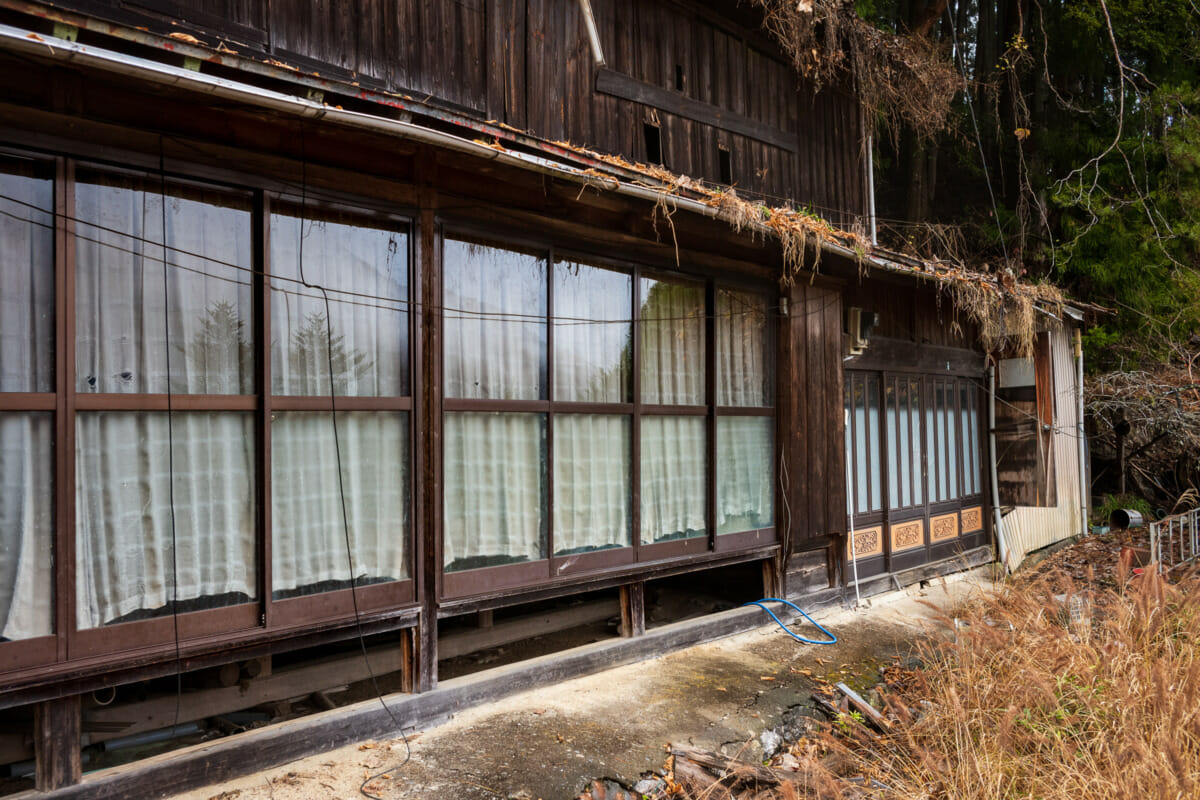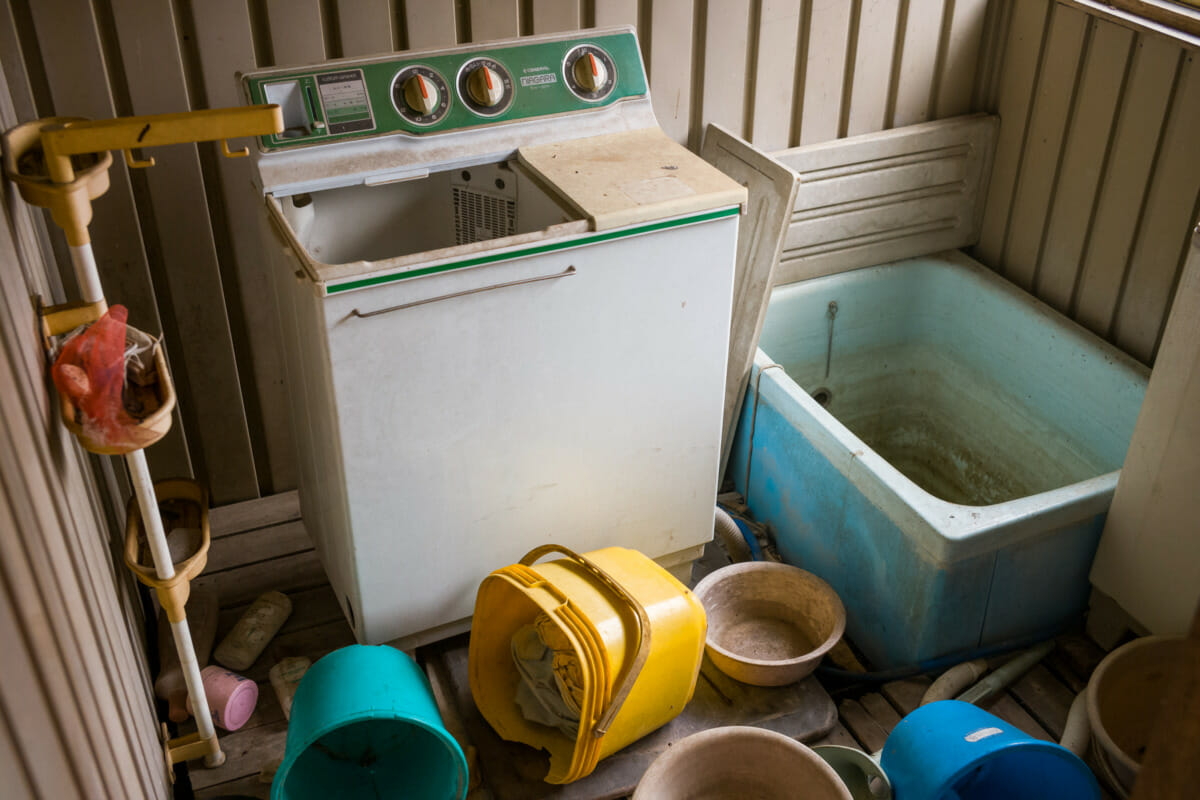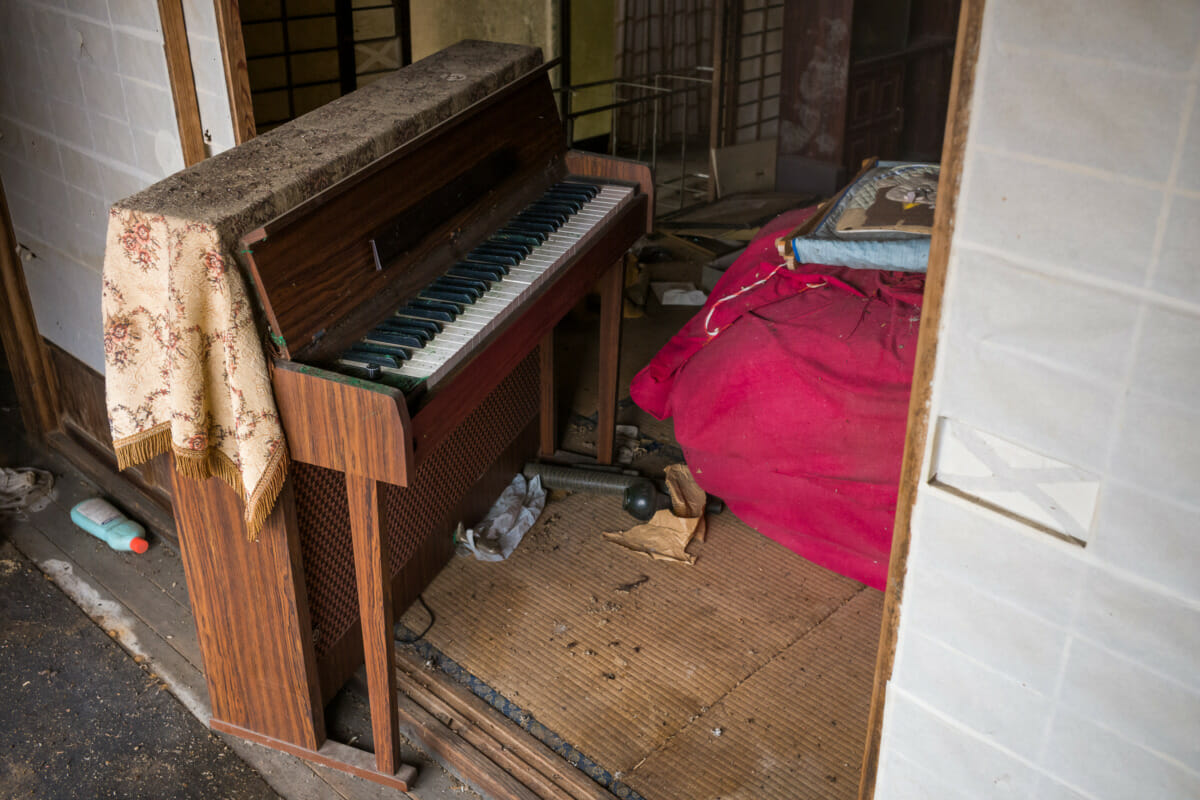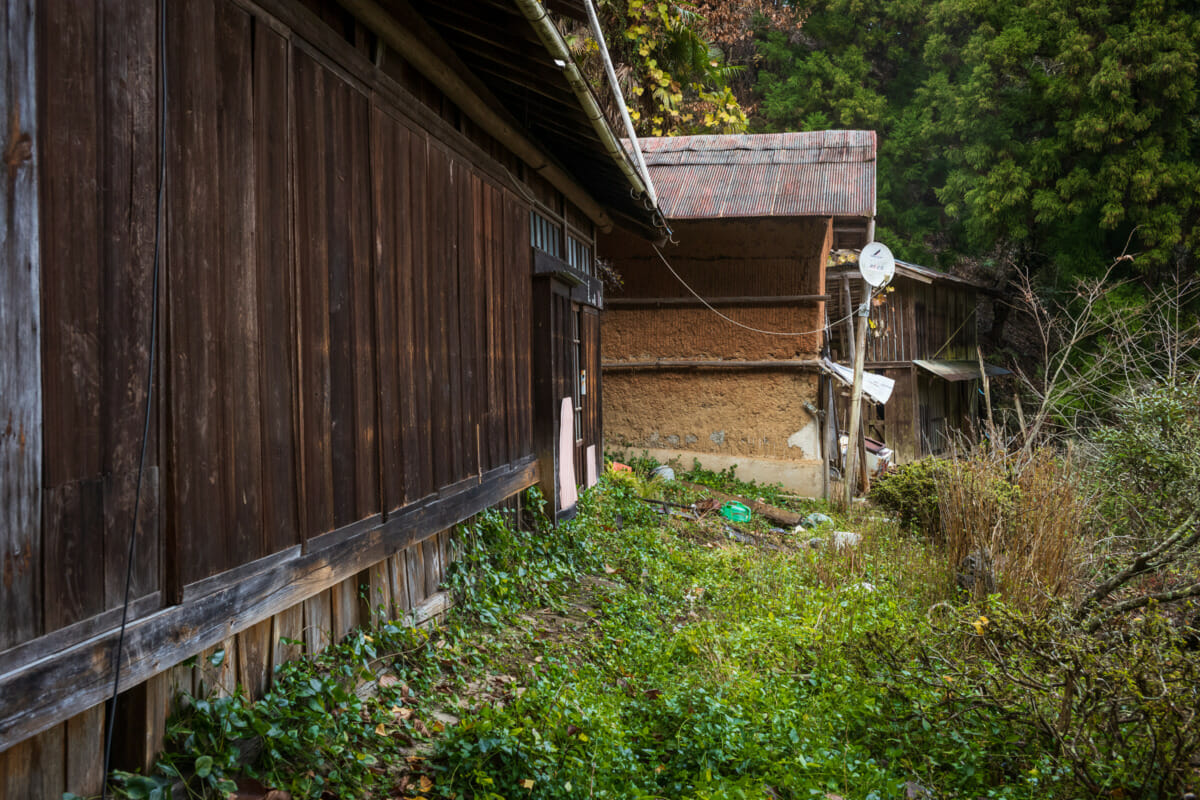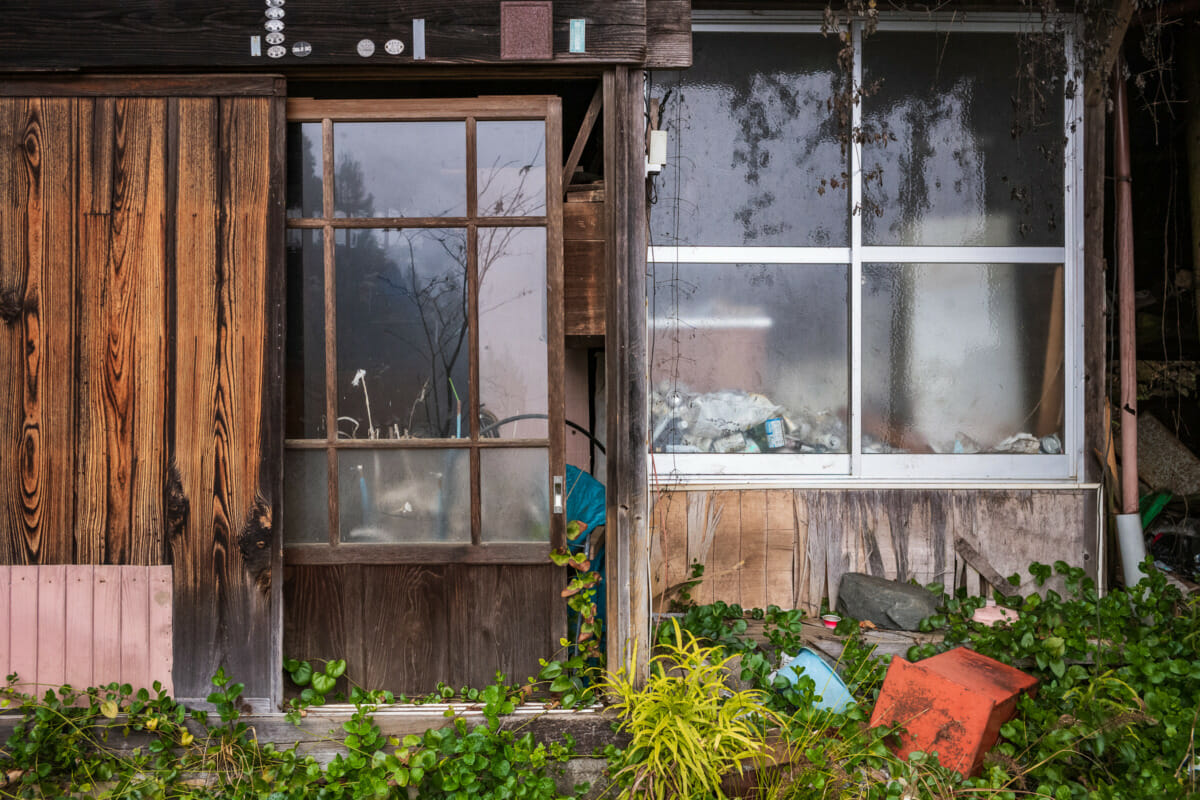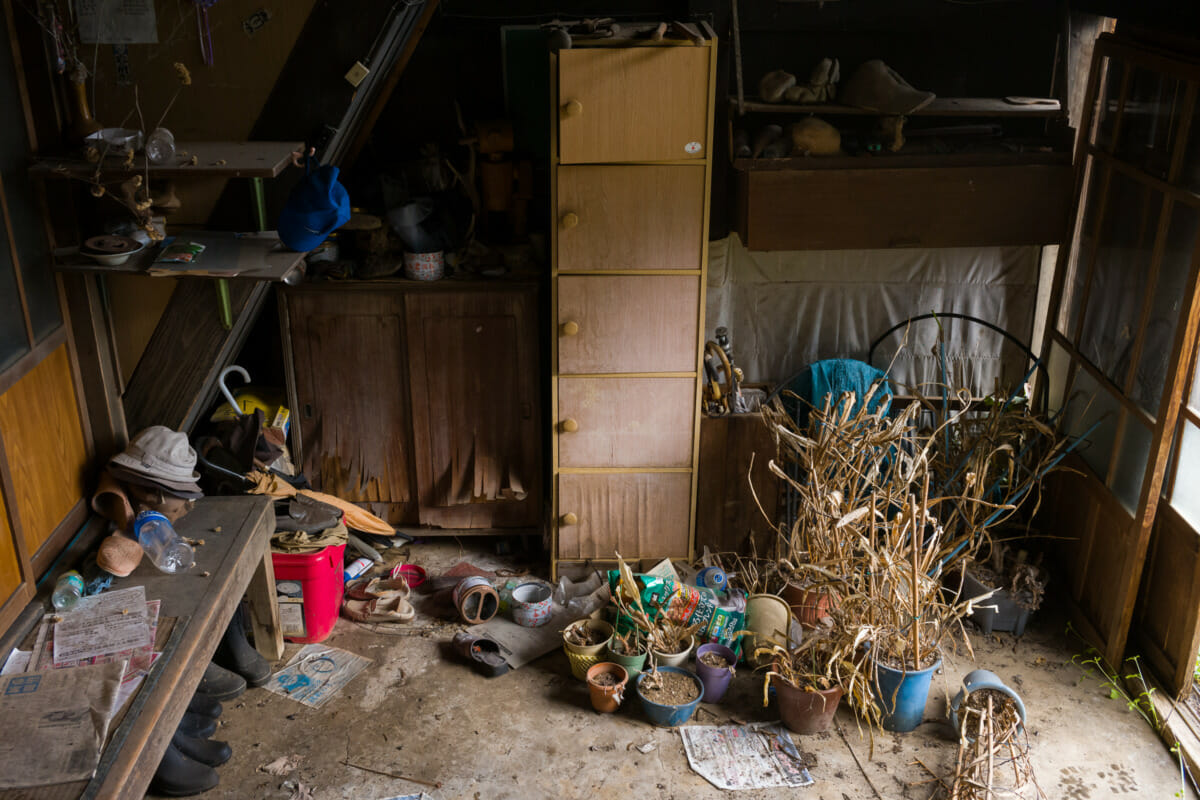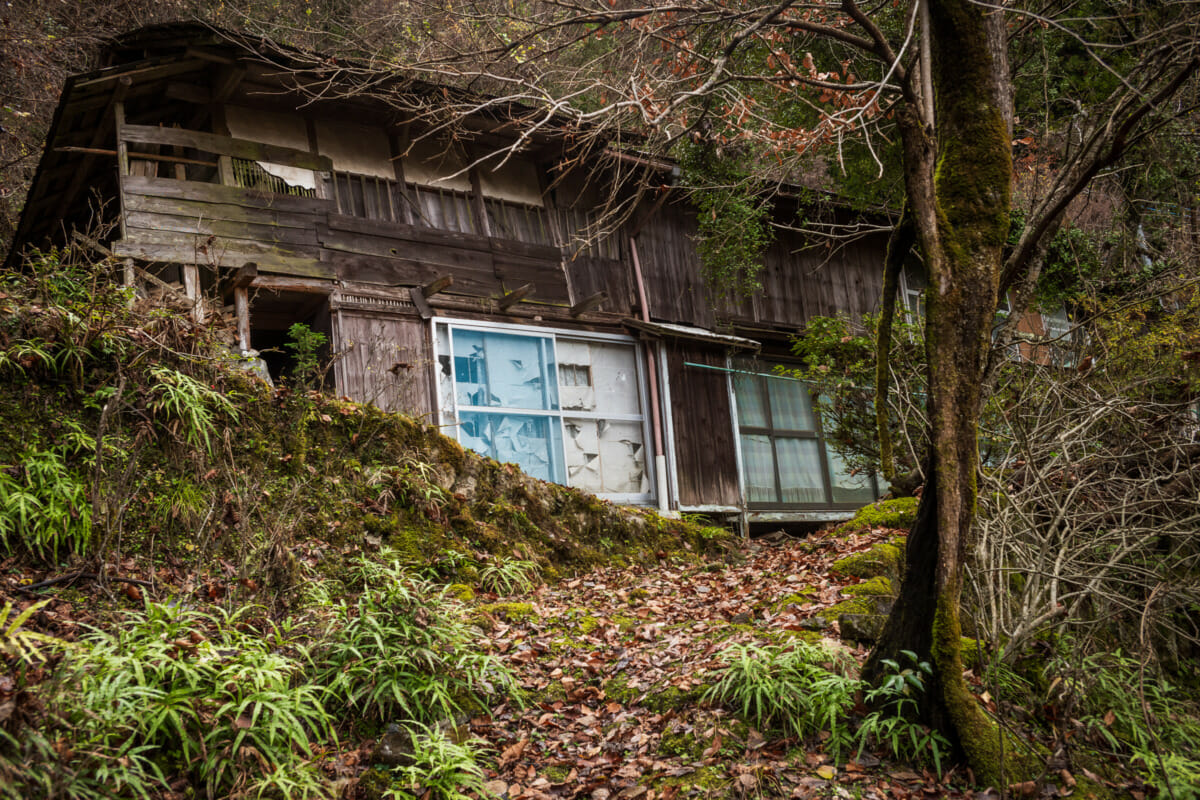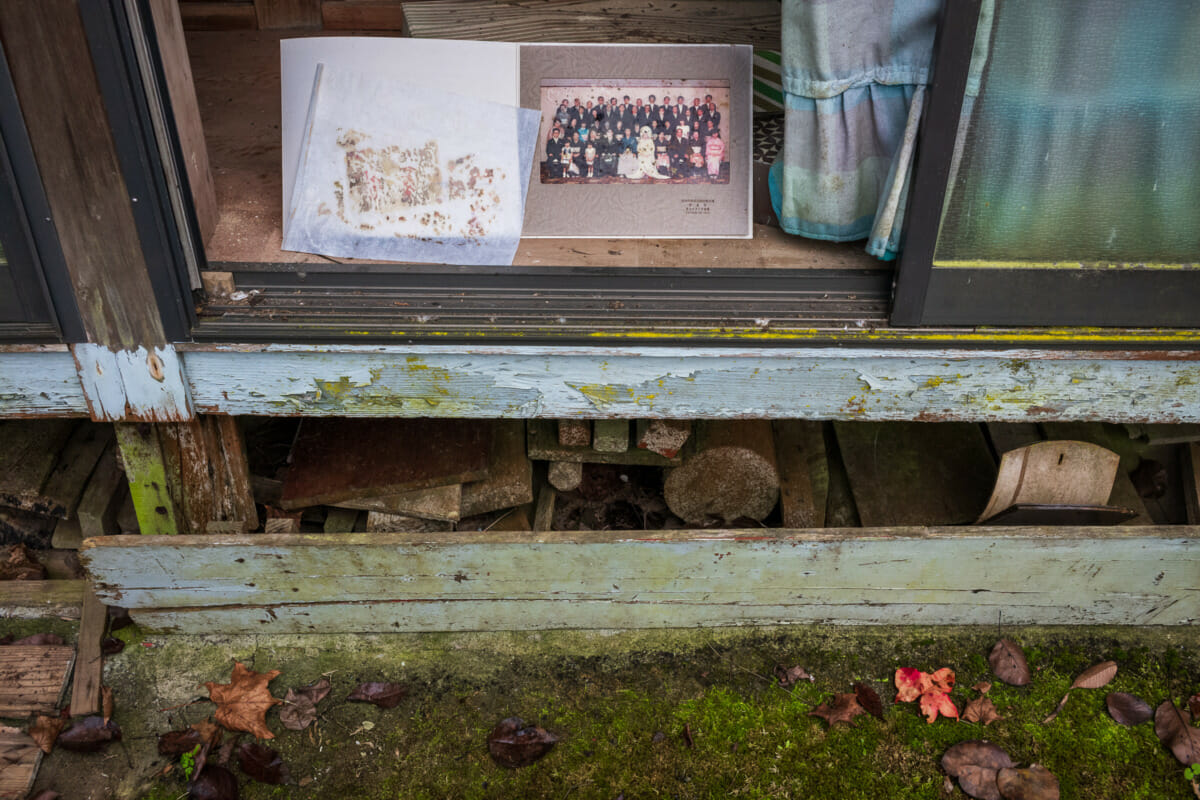Riverside campsites with small cabins aren’t uncommon at all in the Japanese countryside. This place, however, is different. For starters it has clearly been abandoned for decades, but what makes it truly special are the one-time lodgings and their accompanying shower huts. Compact and decidedly basic accommodation that must have looked quite novel back in the day, but now, all overgrown and slowly disintegrating, they are what I can only describe as rather gloriously grim.
Haikyo
Details of a long untouched Japanese hotel room
With no calendar present, it’s impossible to know how long this room has been left untouched — even the bed is still made for the customers that never came. Quite possibly in more ways than one, as it has the look of an old love hotel room even though the building it’s attached to was a more conventional type of lodging.
Either way though, the coin-operated TV suggests the last time it was used was a very long time ago. A tiny space that has a silence all its own and colours that defy the decades, or maybe even hark back to them.
A dark and abandoned old Tokyo house
Tucked away in the middle of some trees with many of the window shutters sealed tight, this old house had quite the atmosphere. A certain sense of darkness in more ways than one, particularly with large photos and paintings of long dead family members, and possibly former residents, always looking on.
Unusually, the calendars upstairs and downstairs differed considerably, and what was once more than likely a multi-generation household, clearly ended up with just the downstairs rooms being used. Presumably by a lone elderly person. The setup and stuff left behind also suggestive of someone who was quite possibly bedridden, and almost certainly receiving medical care. Factors that could also help explain some of the incredibly dated technology found on the same floor despite the last calendar being from 2015.
All that, however, is speculation and educated guesswork at best. What the true story is, and who those people were, will more than likely remain unknown. The photos below then are mere records of far more important moments now forever lost.
Scenes from a faded Japanese hot spring resort
Kinugawa Onsen a few hours north of Tokyo is in many ways the perfect symbol of Japan’s numerous old resort towns. Faded, down-at-heel places whose best days are long gone and slow decline is now the harsh and very visible reality.
Coming of age as it were during the mass tourism boom of the 1950s and 60s, the success of those times in many ways led to Kinugawa’s subsequent downfall, as it resulted in more, and ever bigger hotels, culminating in the construction madness of the bubble years. The inevitable bursting of said bubble in the early 90s, however, promptly put an end to such developments, and the area’s visitor numbers peaked around the same time. Since then it’s been a gradual spiral downwards, both in popularity and appearance.
Understandably there’s now a concerted effort to demolish the many hotels that fell foul of changing times and trends, but the damage can’t be so easily undone, as whatever beauty the river and surrounding landscape once possessed has long since been lost. Local businesses have also suffered, with many now no more, as the former white-walled behemoths that dominate the town catered to their customers’ every need, meaning guests didn’t have to leave the premises.
Several decades after its peak then, here are some photos of Kinugawa Onsen at the end of 2022. A fascinating place in so many ways, but none of them are what the money men would have hoped for when they set out about changing it all those years ago.
Game consoles, music and lots of memories in an abandoned Japanese home
Some of the abandoned homes I’ve photographed over the years have begun the slow process of being taken back by Mother Nature, whereas others are almost beyond belief in their scale and opulence. The house below, on the other hand, felt very different. A lot of it was filled with clutter, but a few rooms gave a real sense of the lives once lived there, such as their interests, and the approximate time period. A weird sense of intimacy that was further added to by the photo albums left behind. Faces that conjure up so many questions, but at the same time offer next to nothing in the way of answers, as despite the words of Karen Carpenter that once echoed throughout the house, it will sadly never be yesterday once more.
The misty mountains and abandoned homes of Tokyo’s far west
Whenever I head out to Tokyo’s westernmost environs, it never fails to amaze me that the completely different surroundings are still part of the capital. The scenery there is worlds away from what most people think of the city, and indeed what the vast majority of it looks like. A feeling that was increased even further last week with the mist that greeted us as we moved towards the area’s mountains.
The idea was to try and find some old houses that we suspected were long-abandoned. A plan that worked out perfectly, although not all the former homes had been unoccupied for as long as we expected. Most had unsurprisingly been left unused for a couple of decades, but one had quite shockingly been lived in until 2016. Accommodation that would have been uncomfortable in the city’s more urban areas, but out there in the mountains it must have made for an incredibly tough life to say the least.
However, a few dates and the locations aside, there’s next to nothing we know about the people who once resided there, such as how they lived and why their homes ended left the way they were. The photographs taken on the day are really all I have, so here they are, along with shots of the journey up to and between the houses. Scenes that prompt a whole host of questions, but at the same time provide little in the way of answers.
